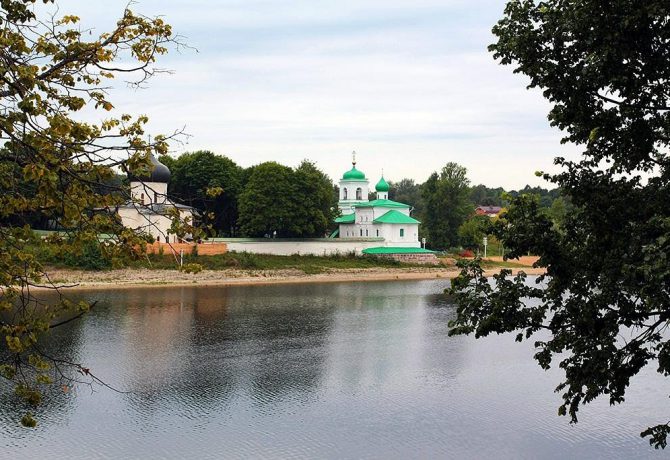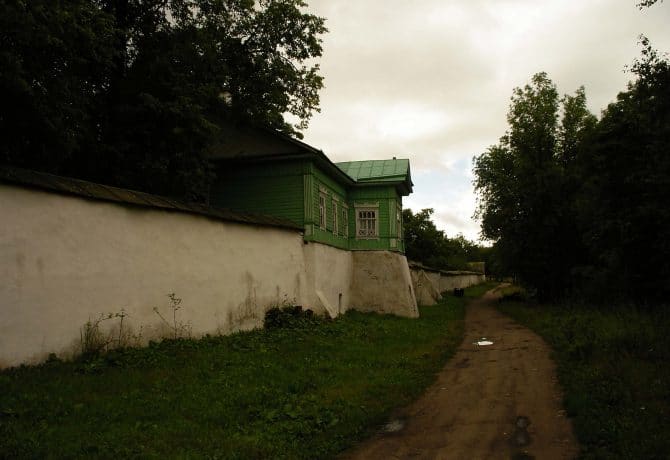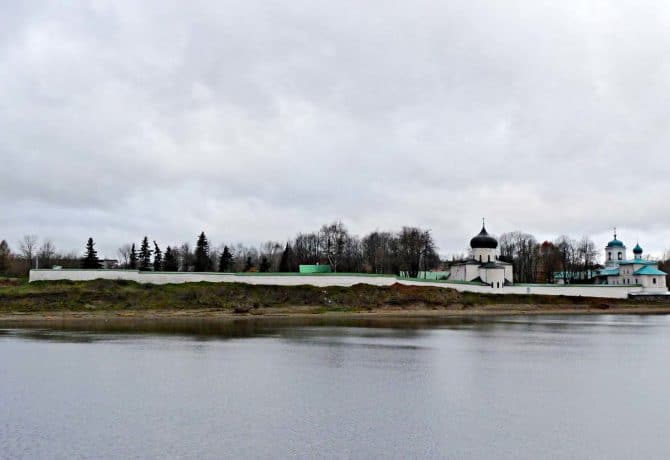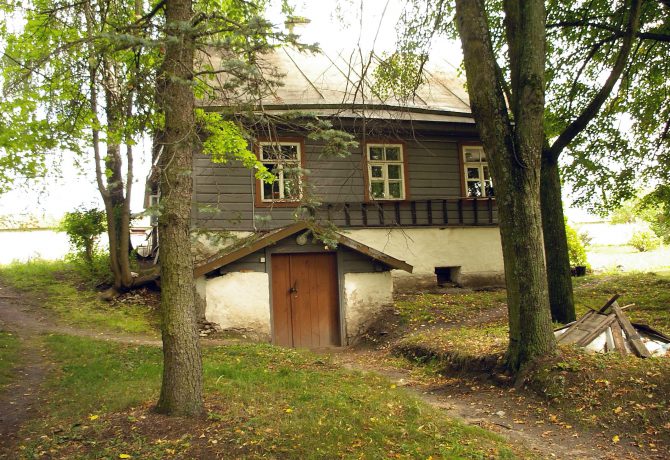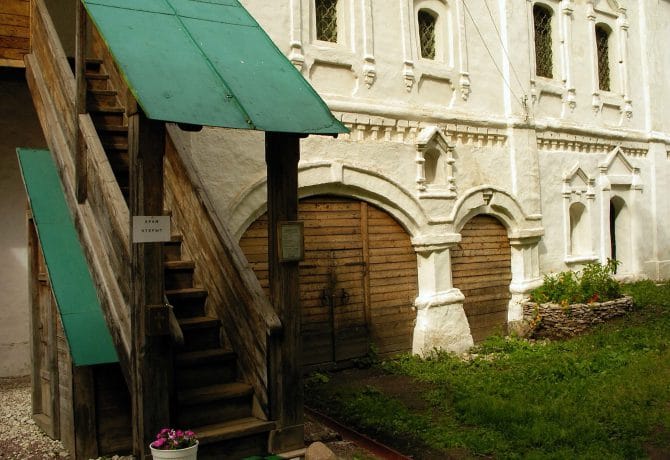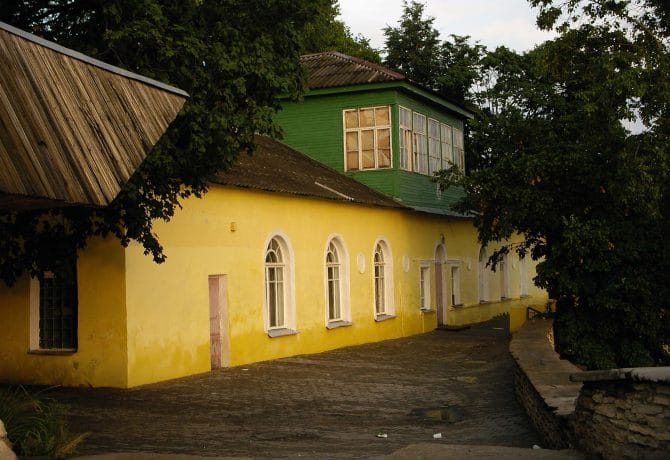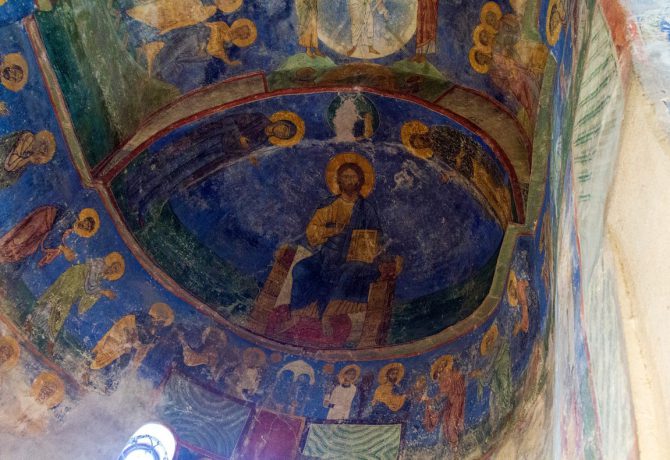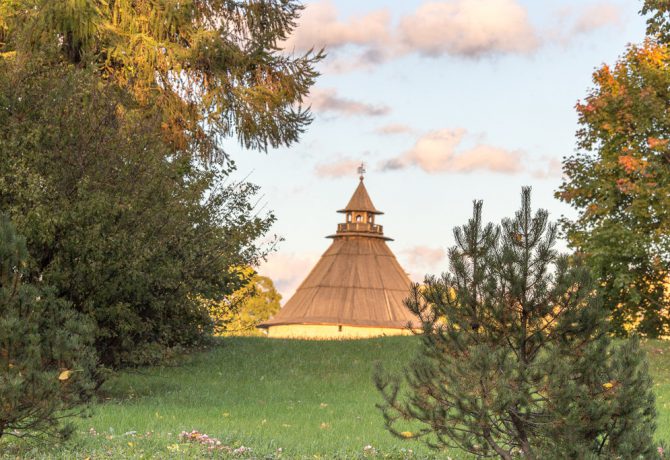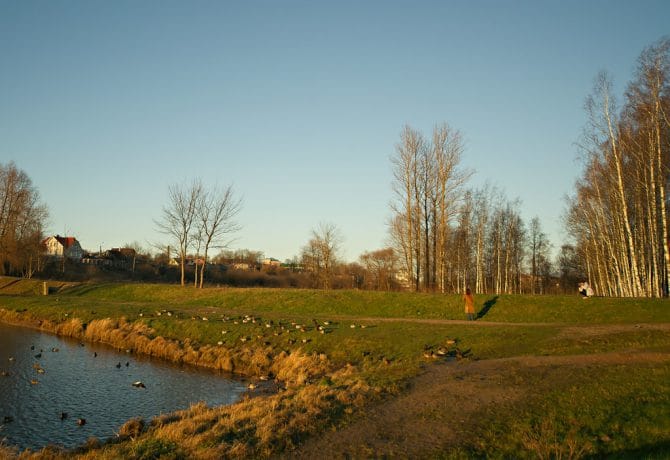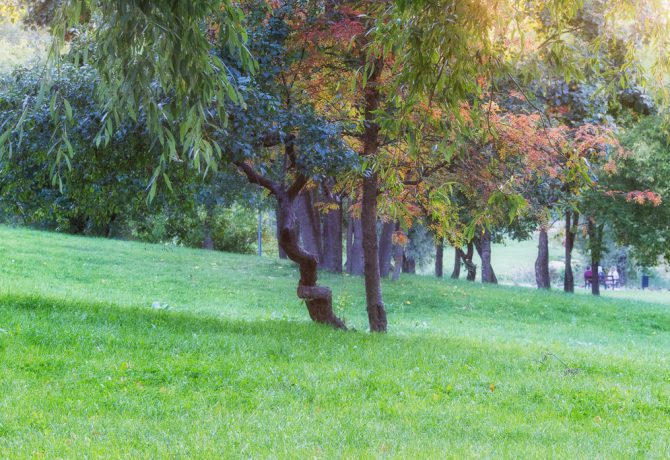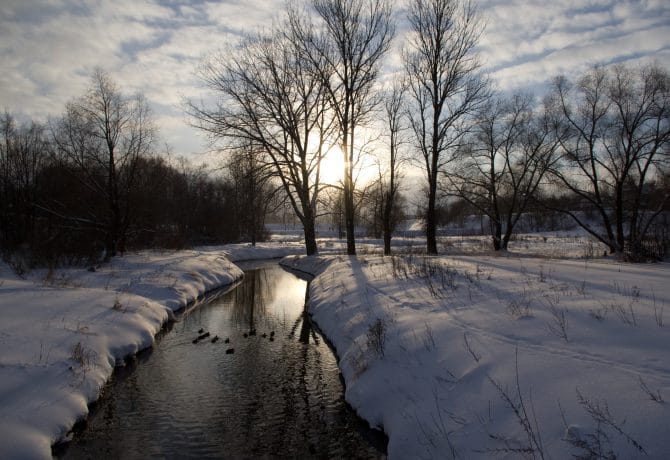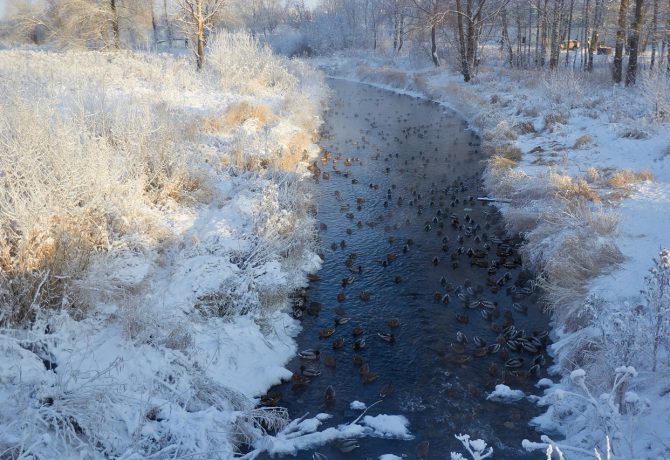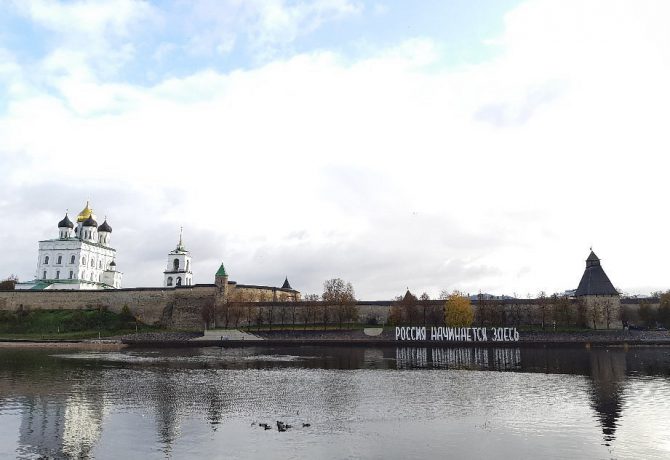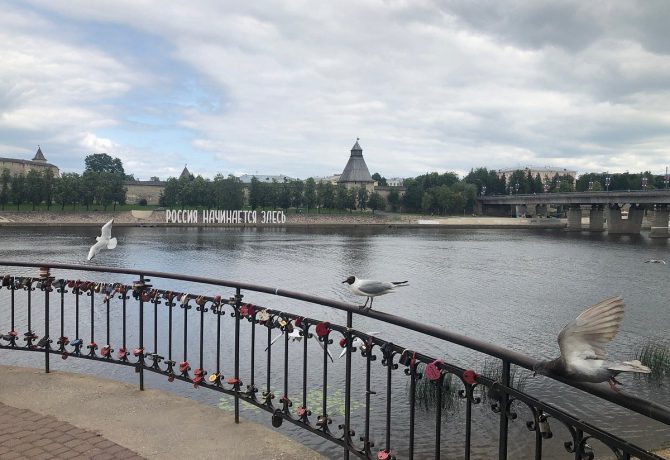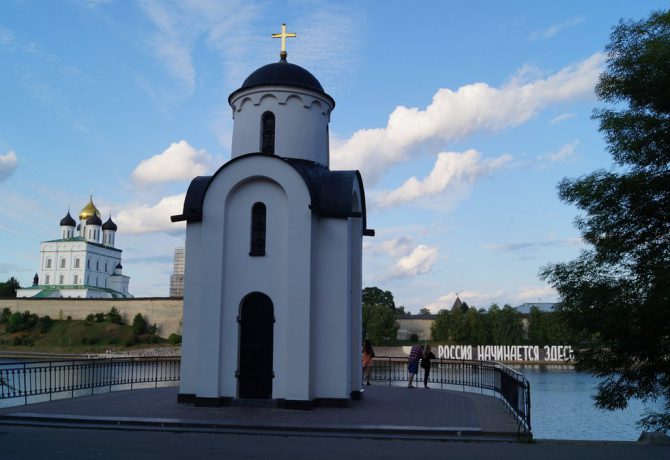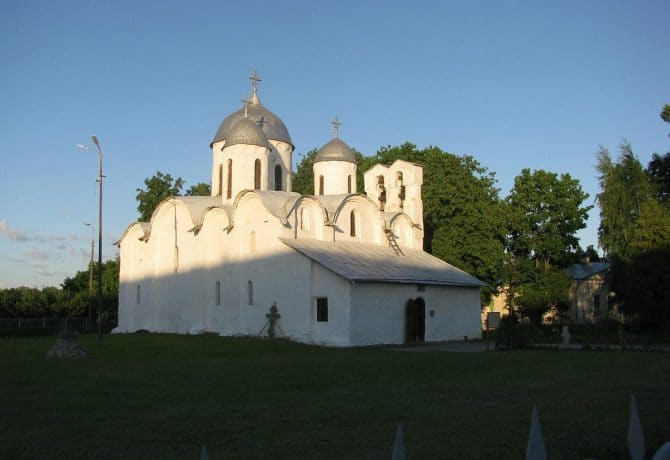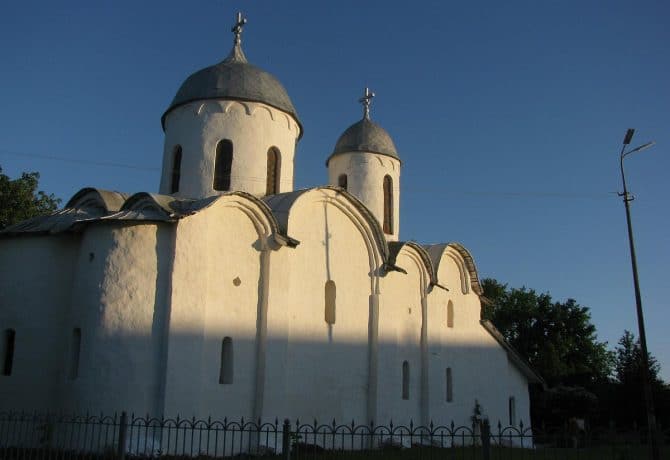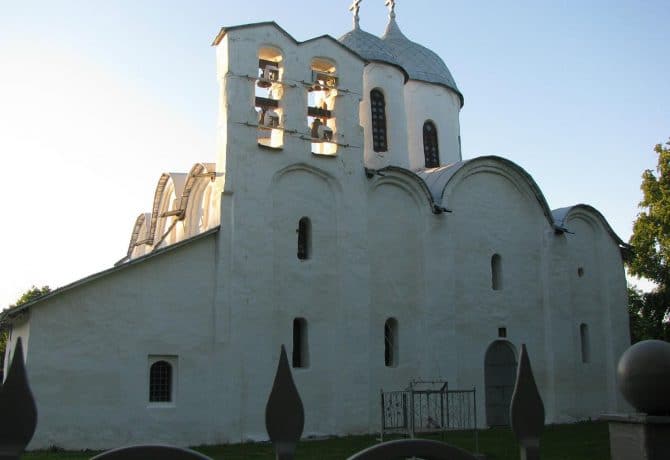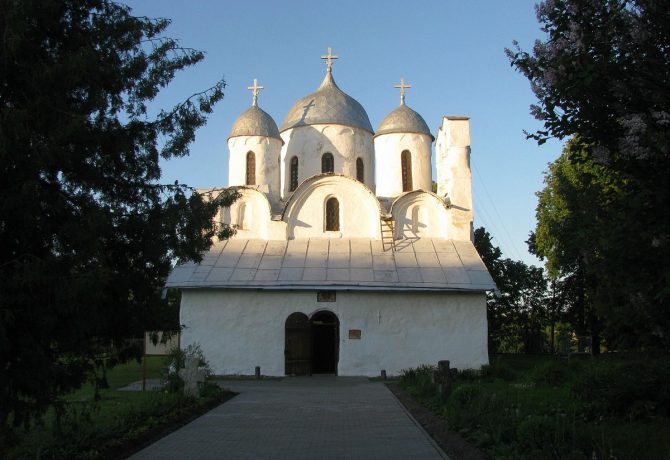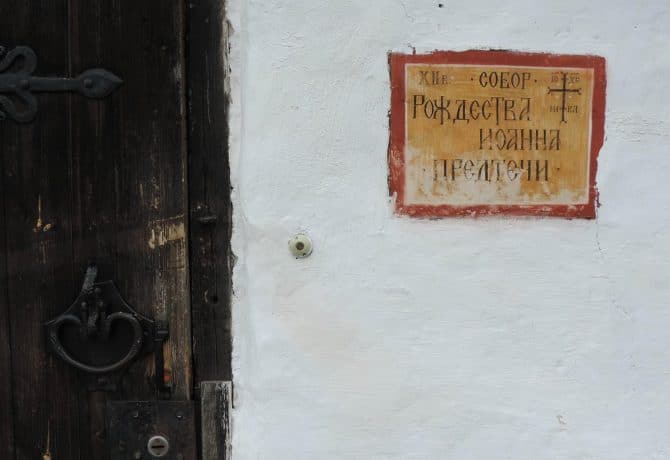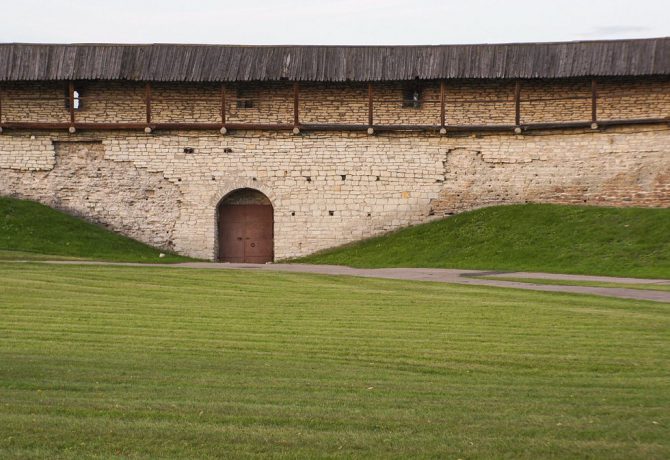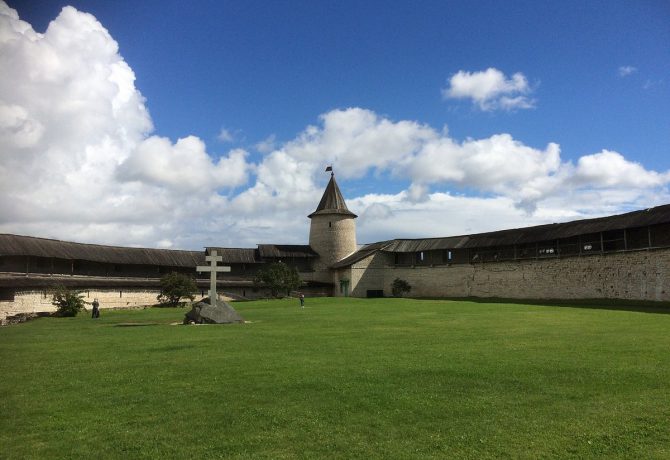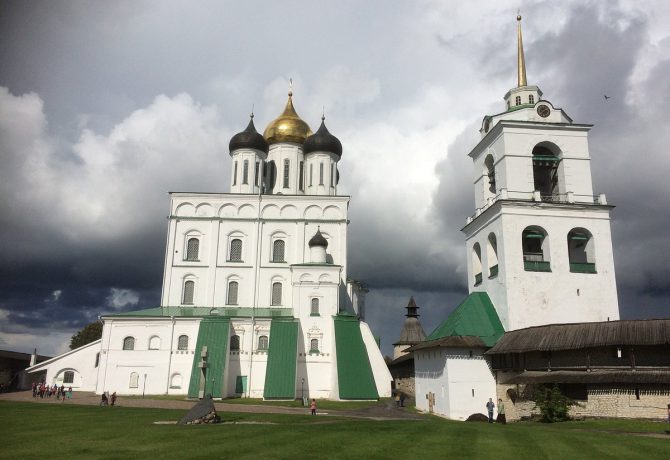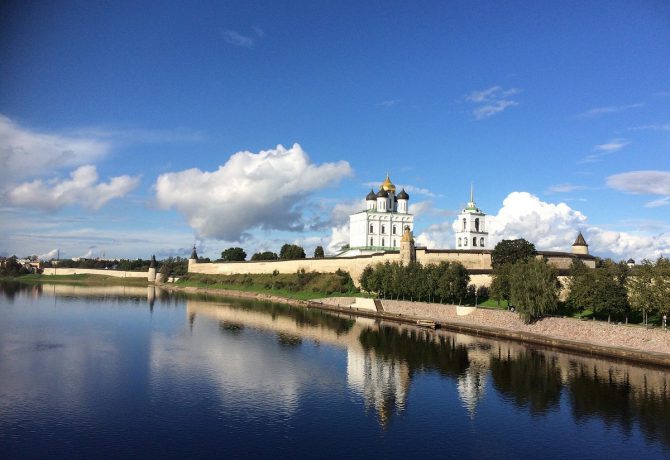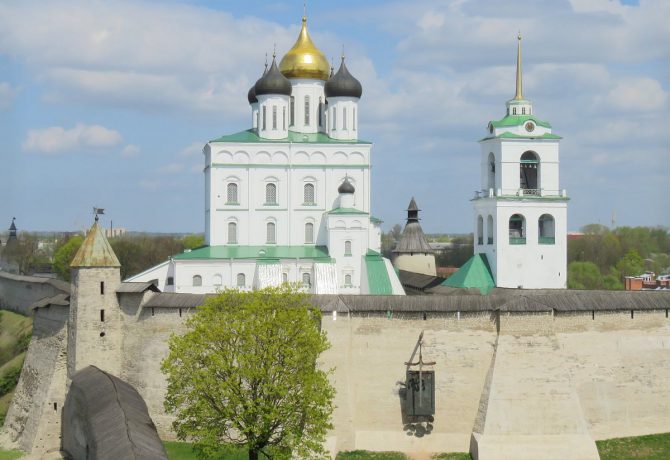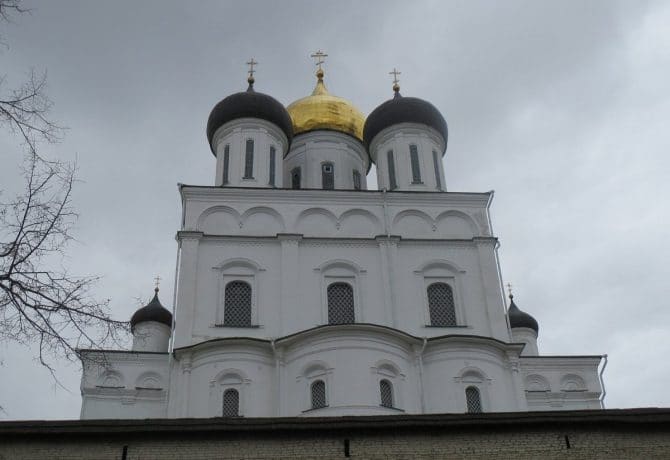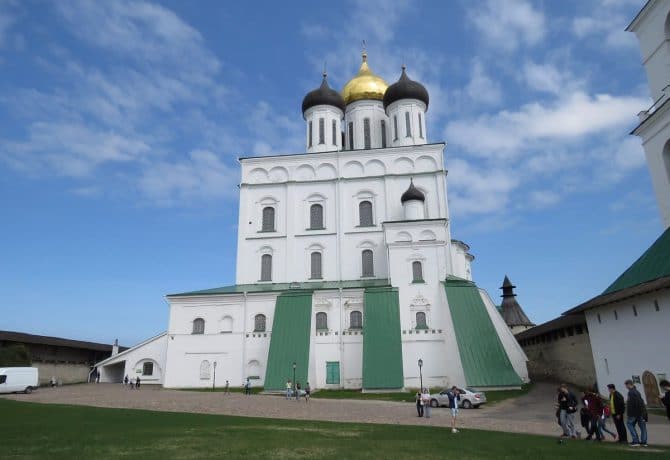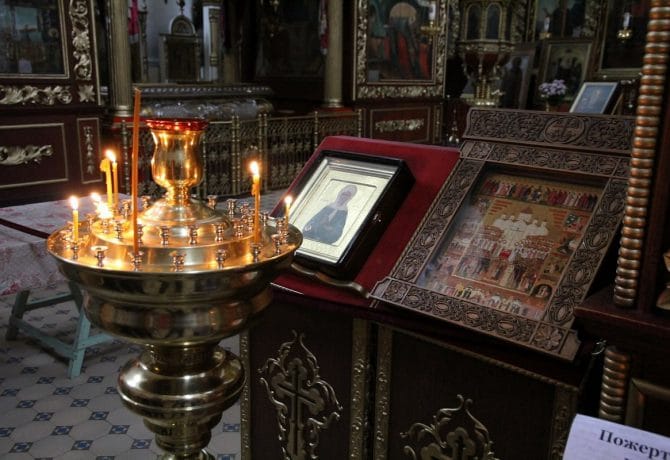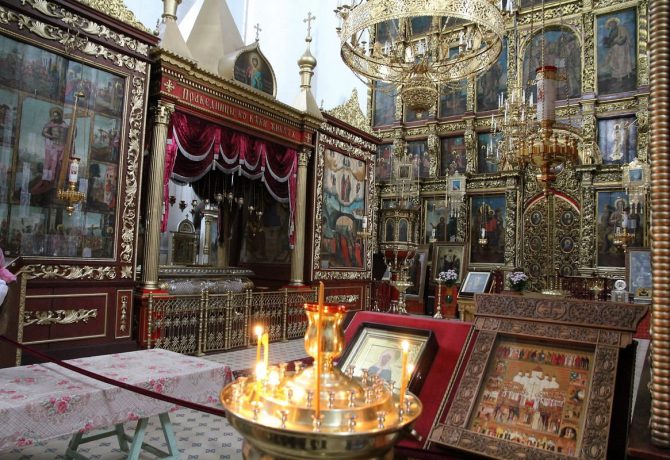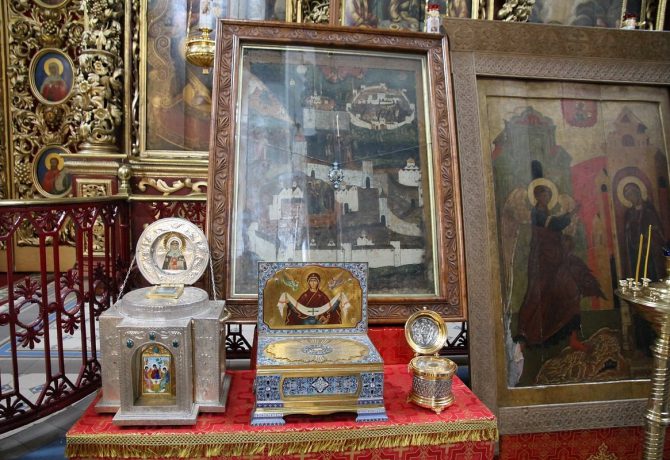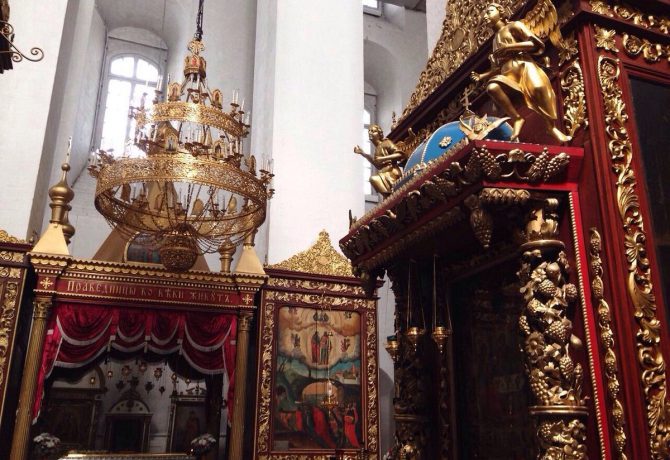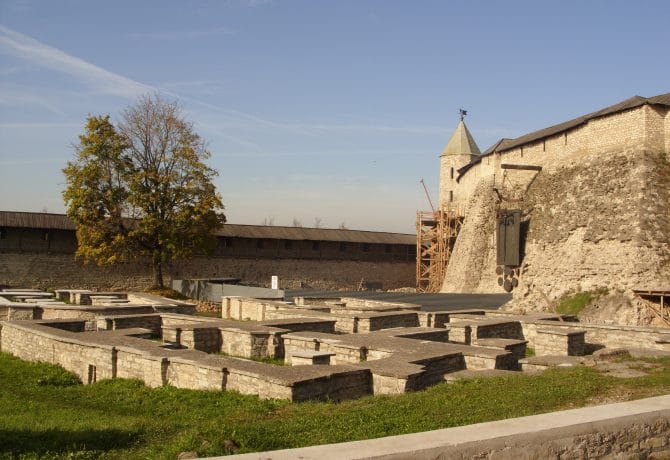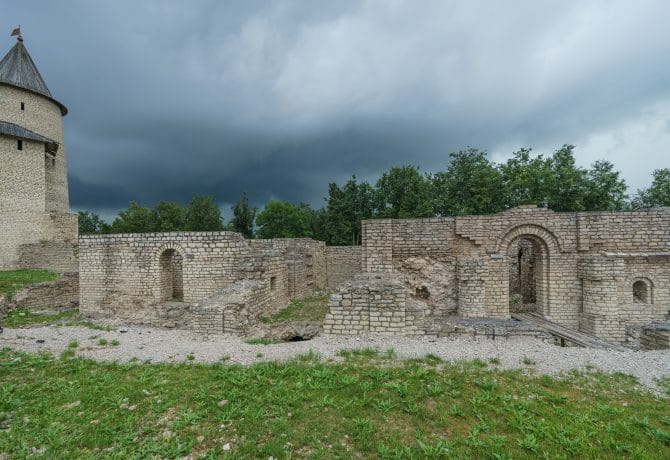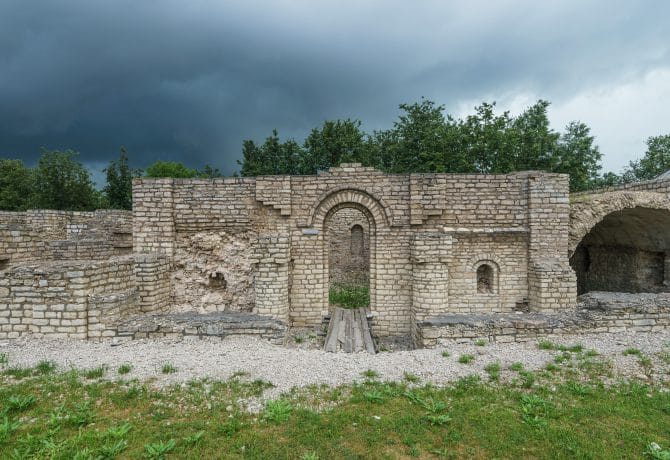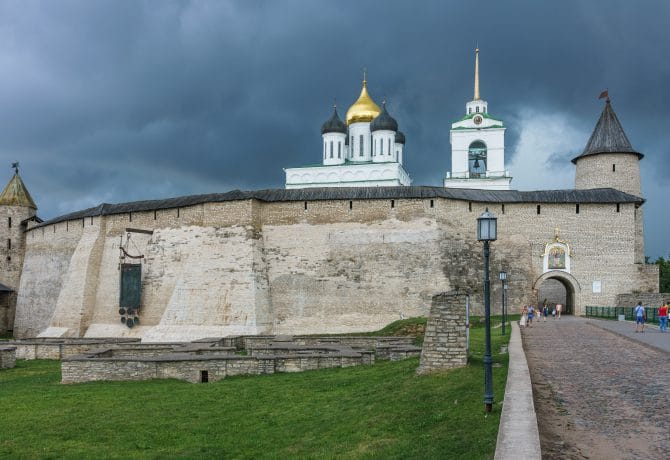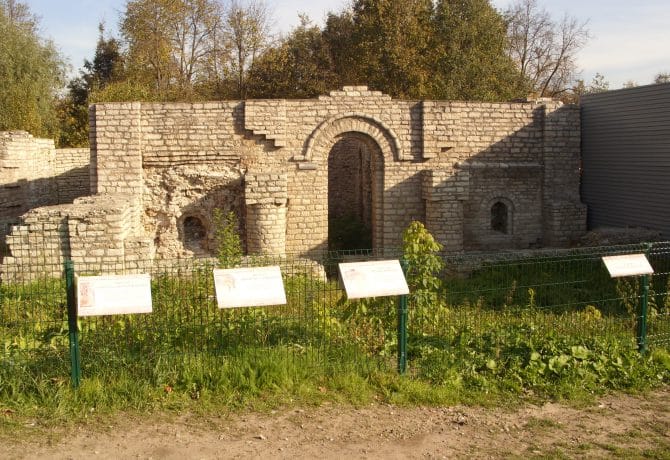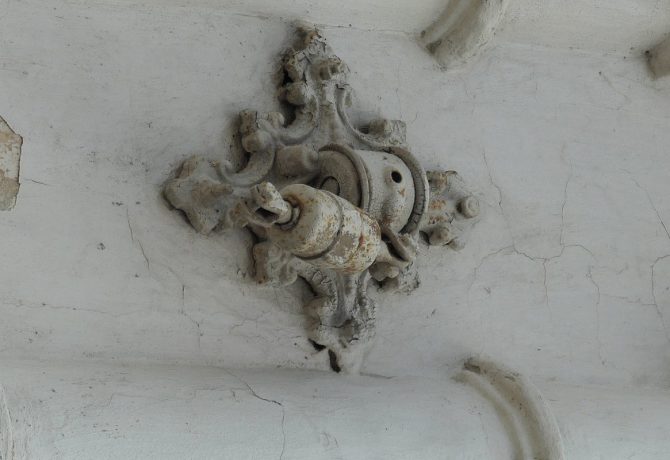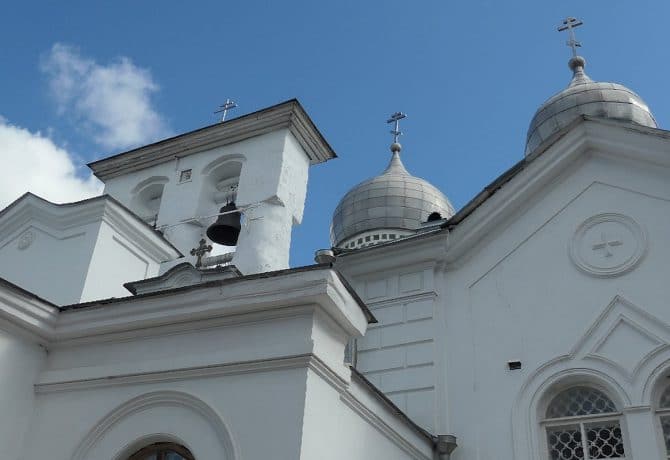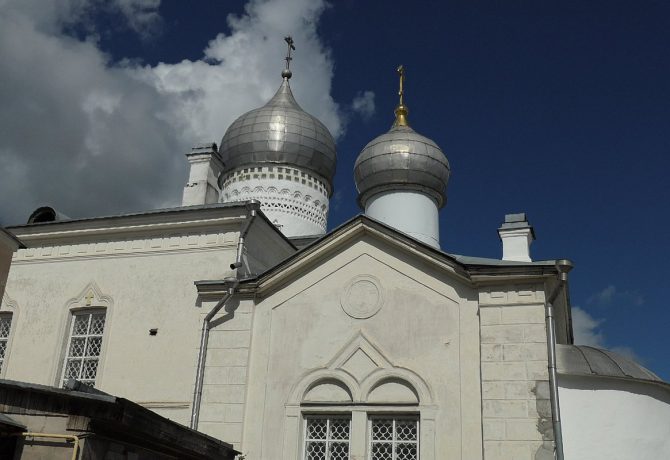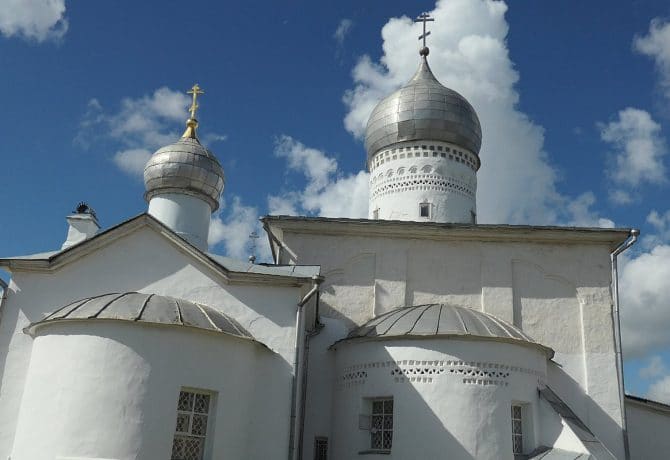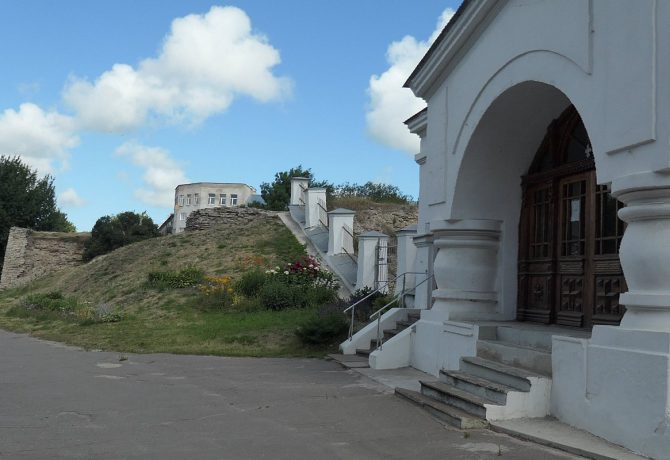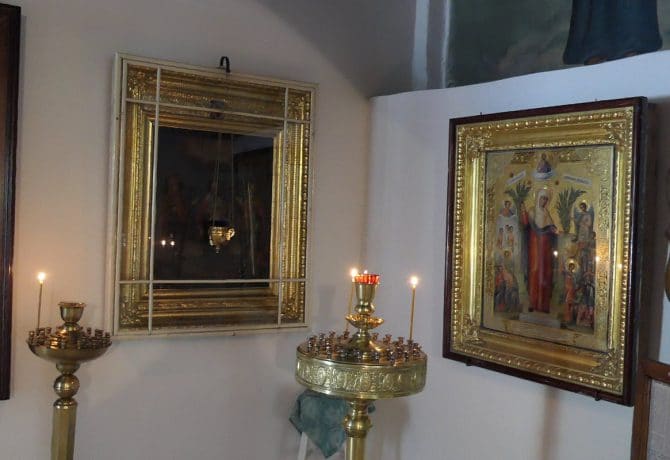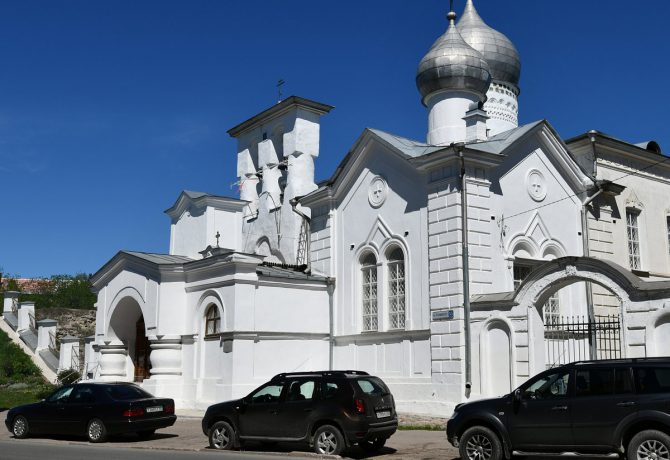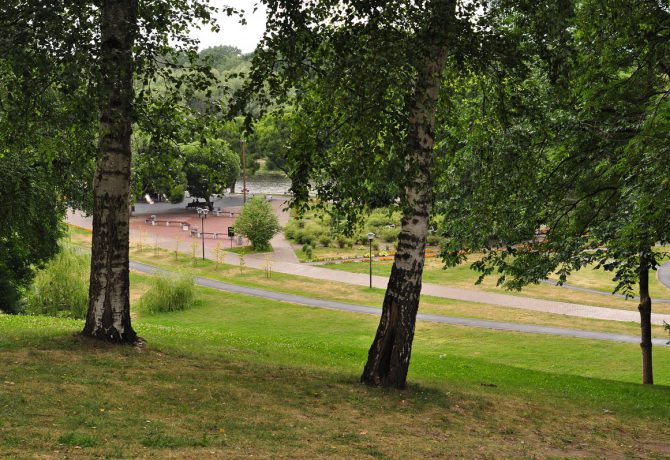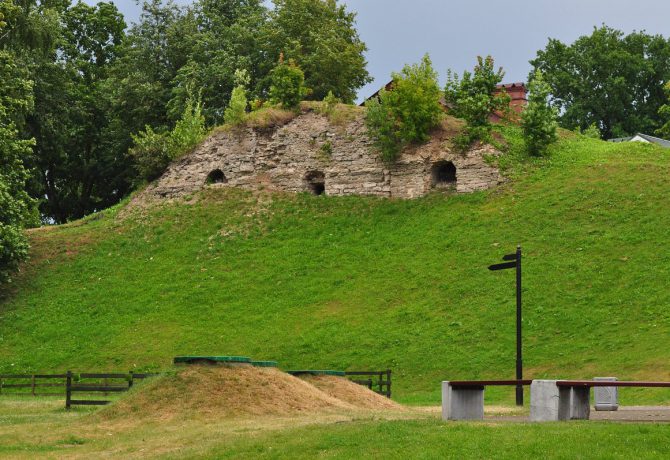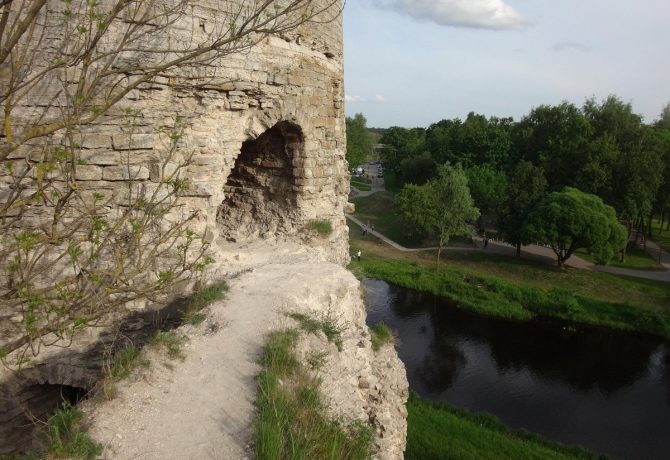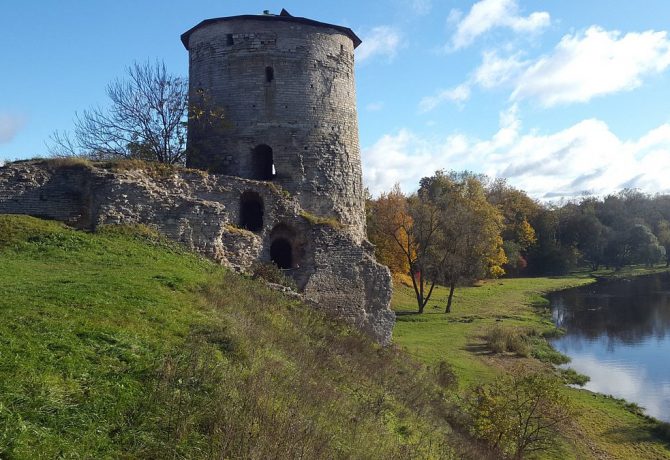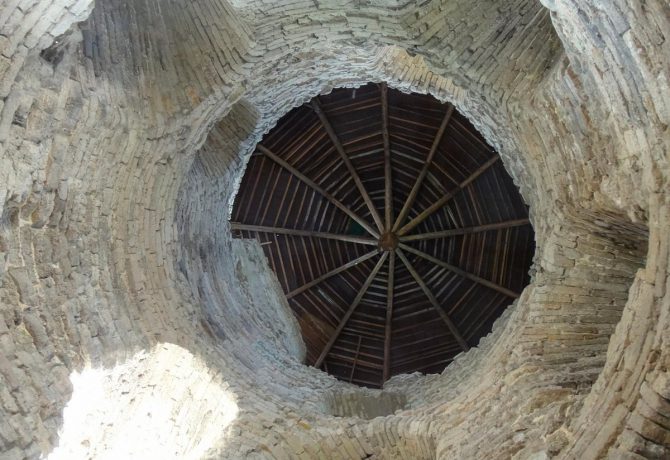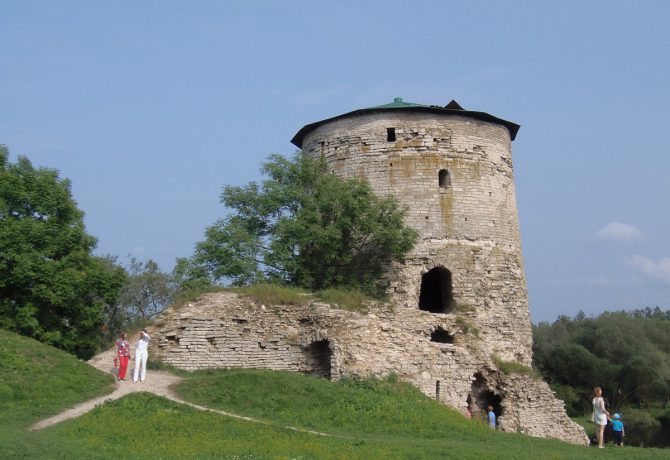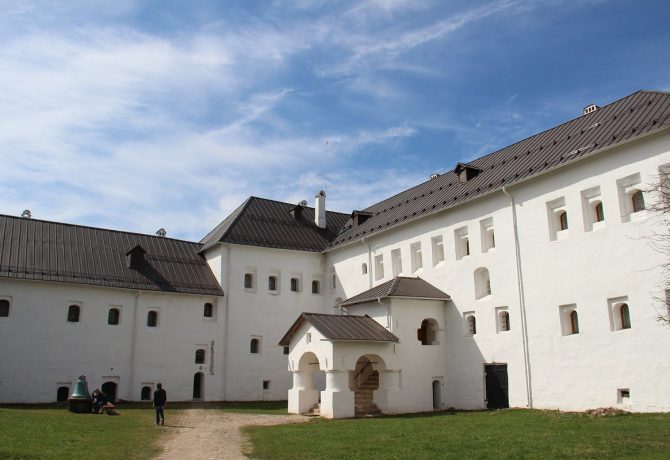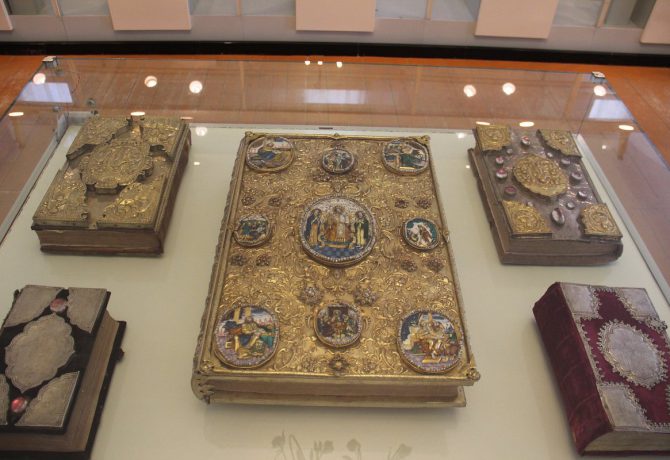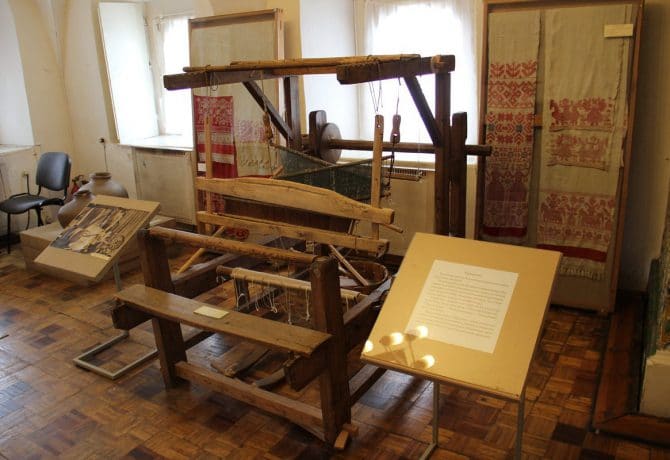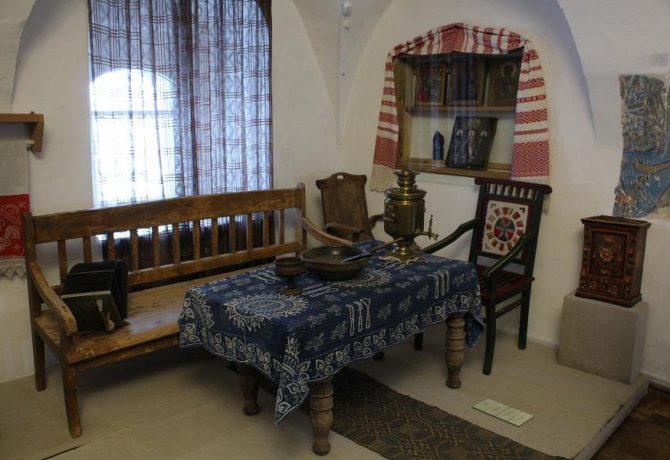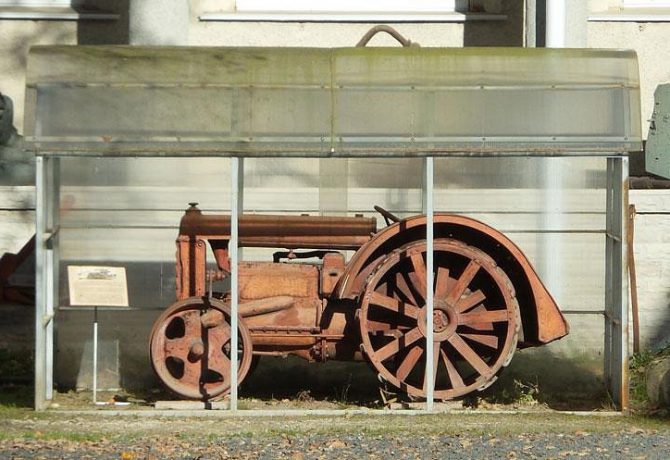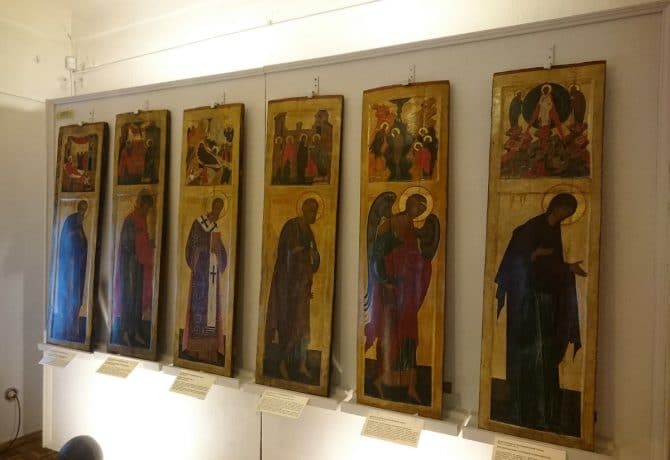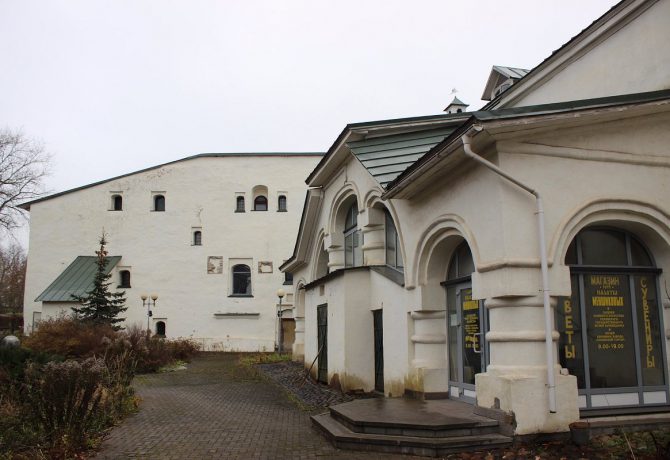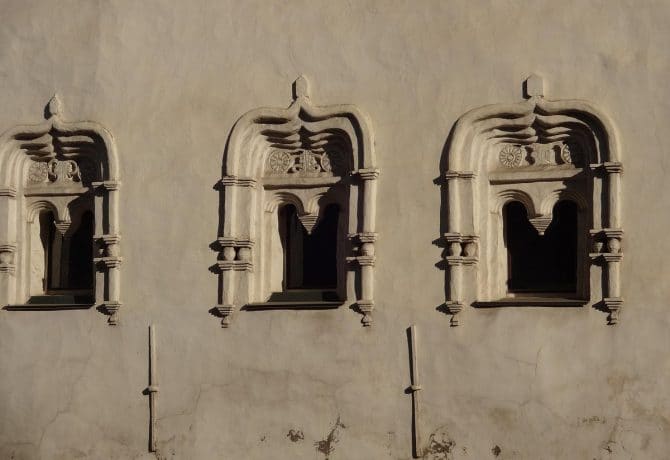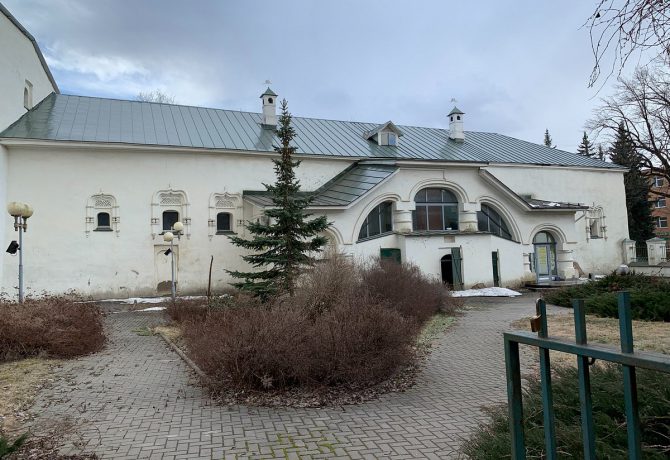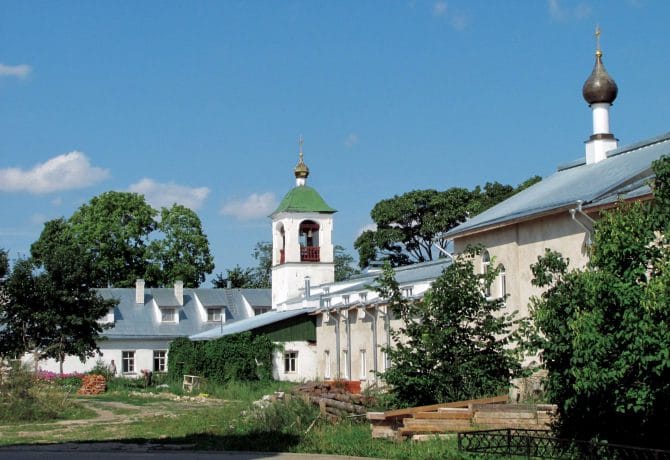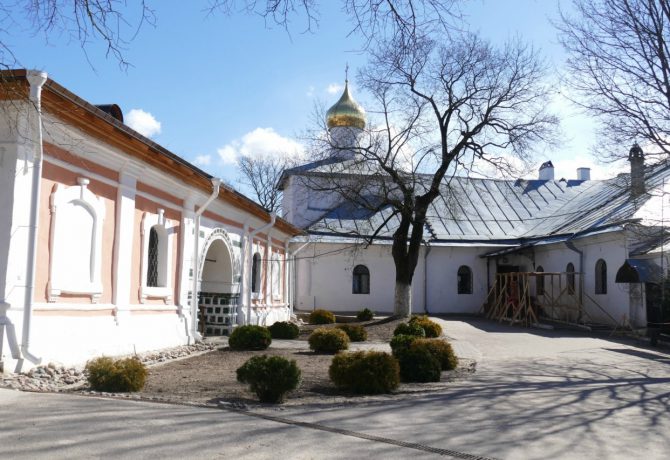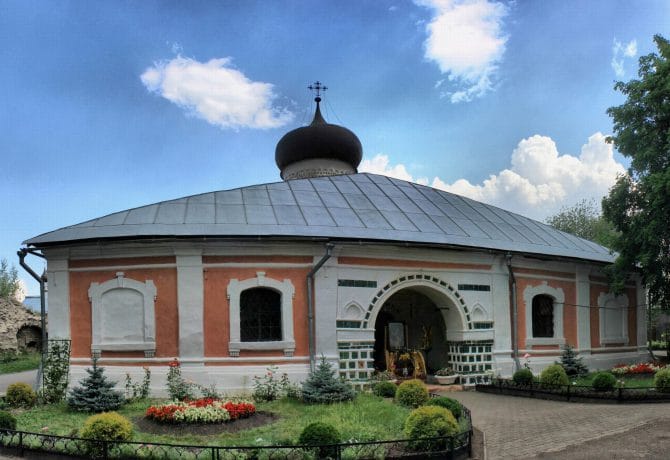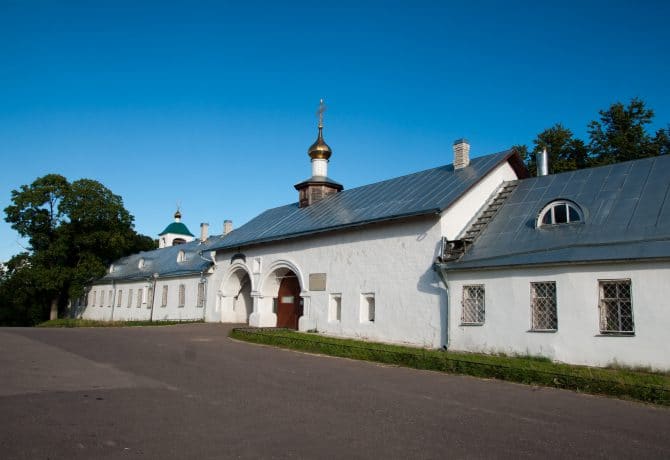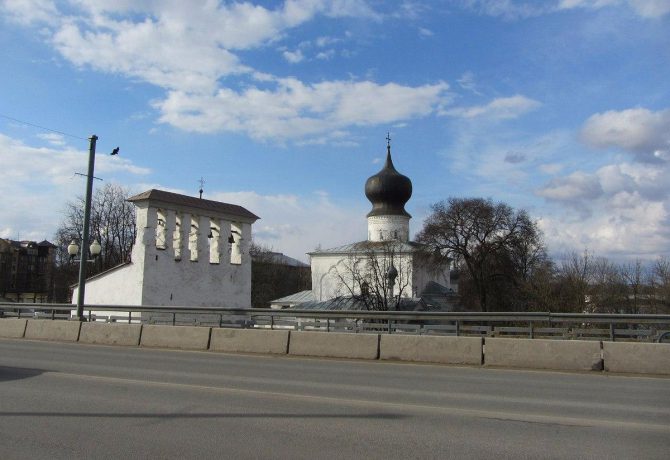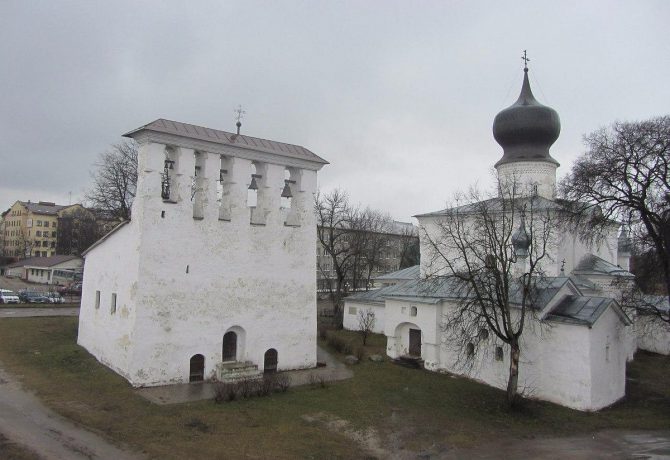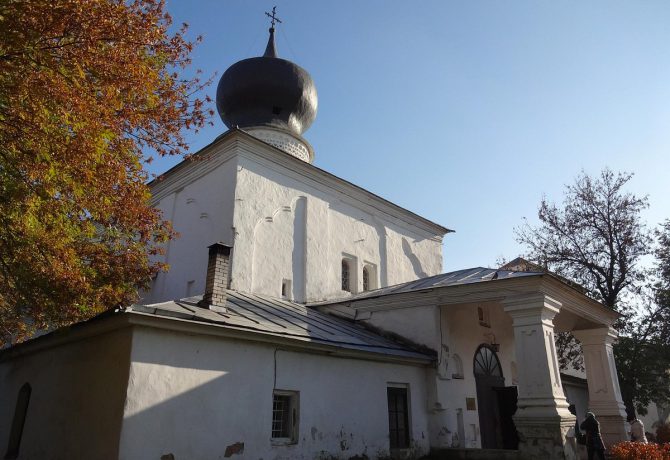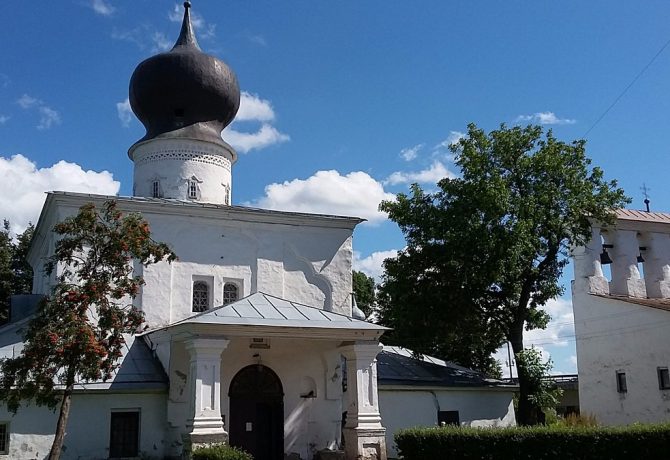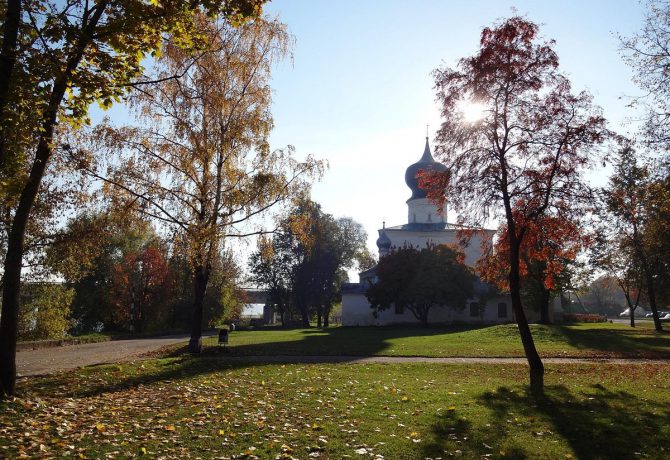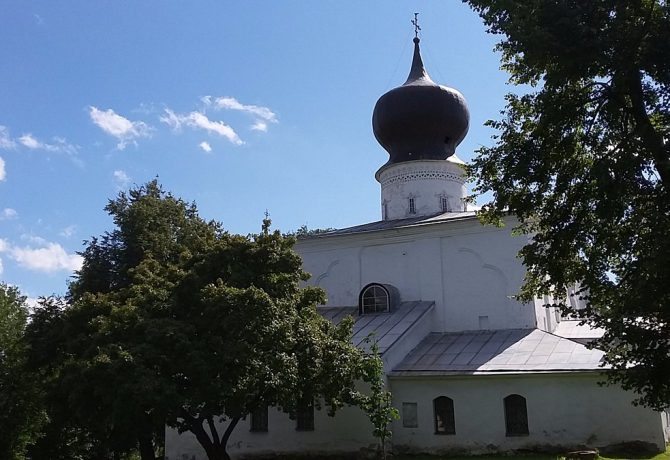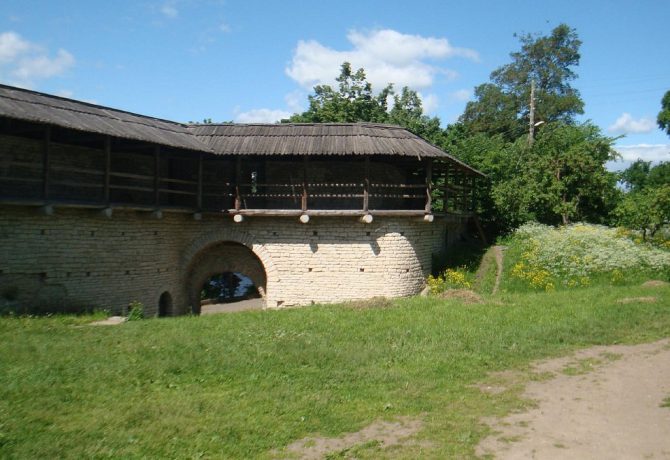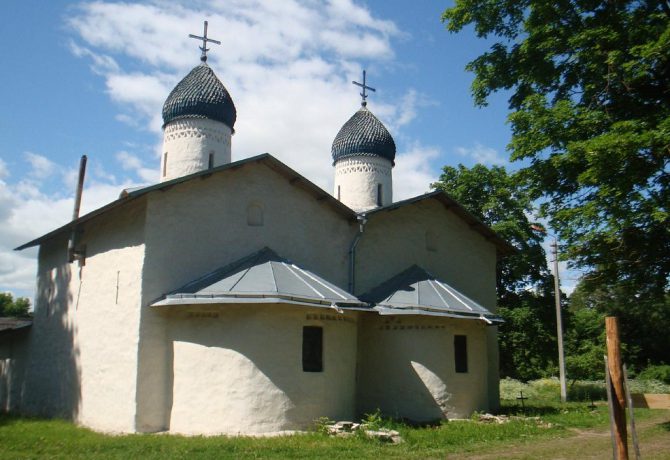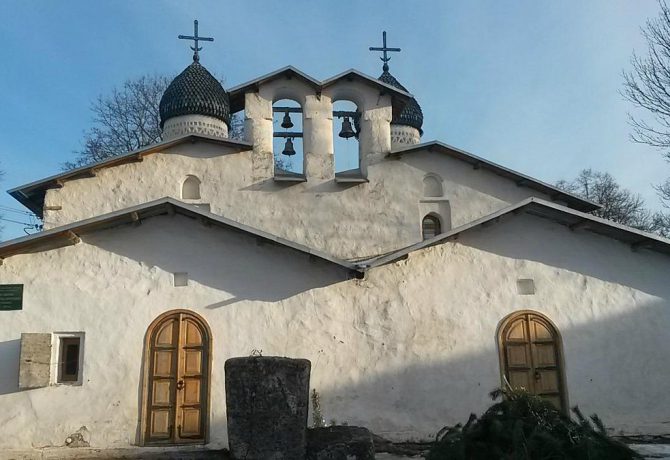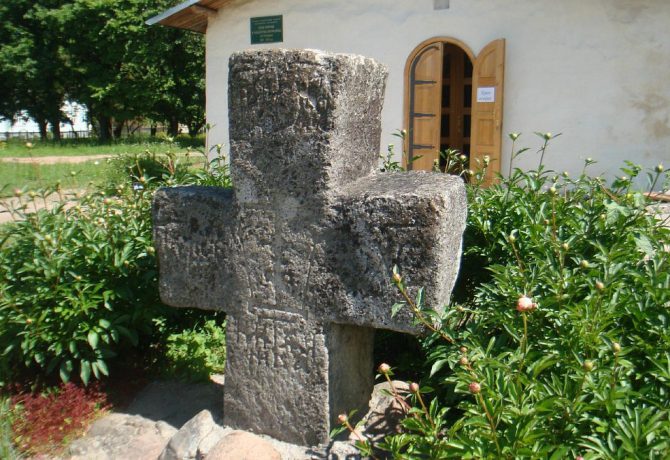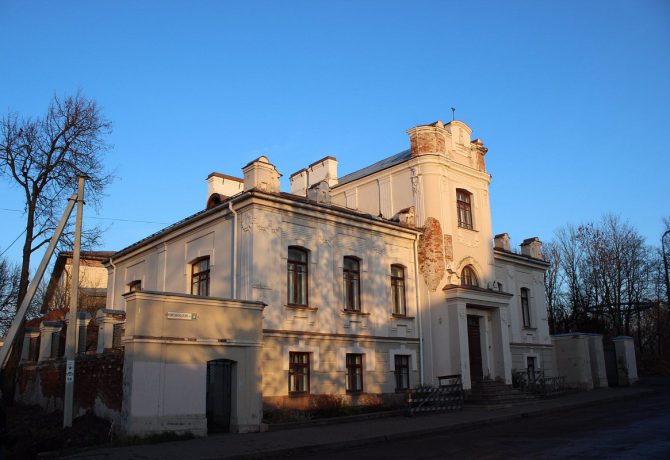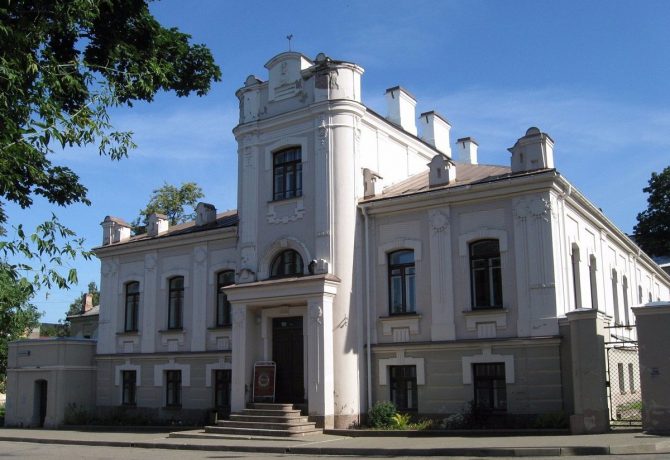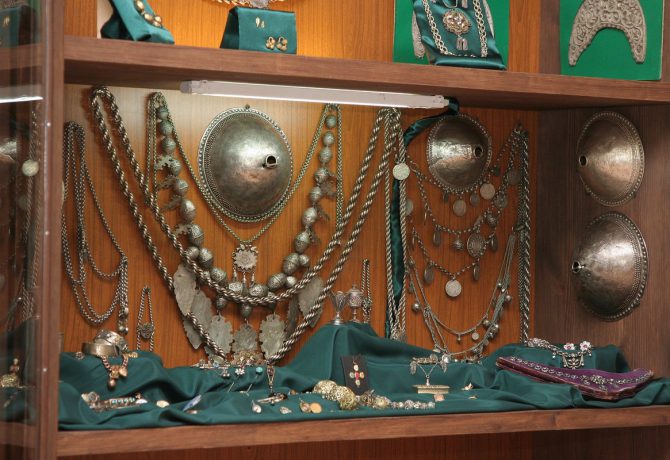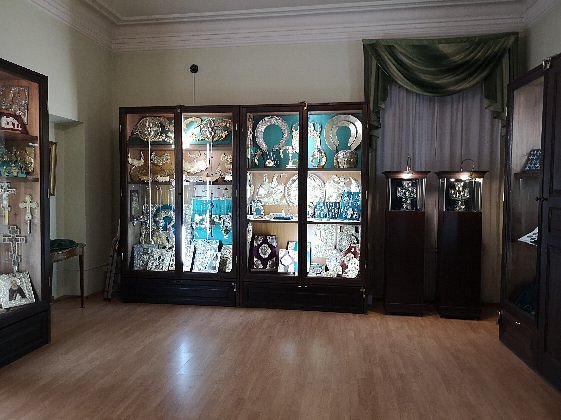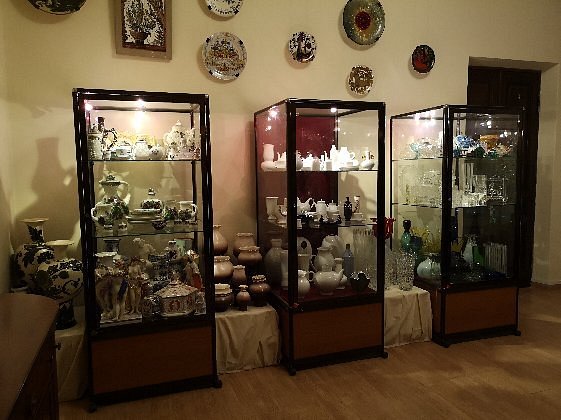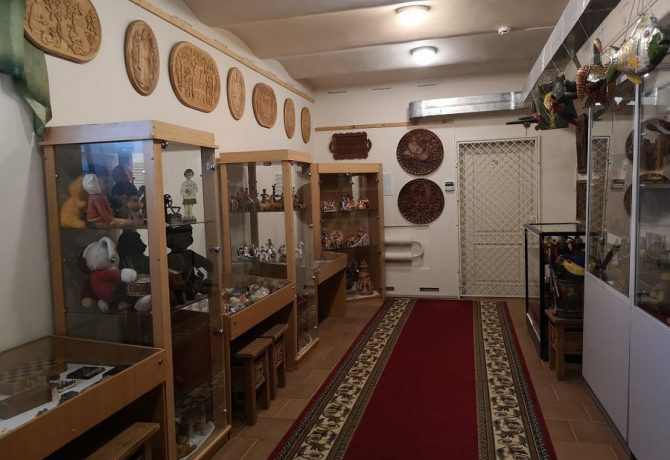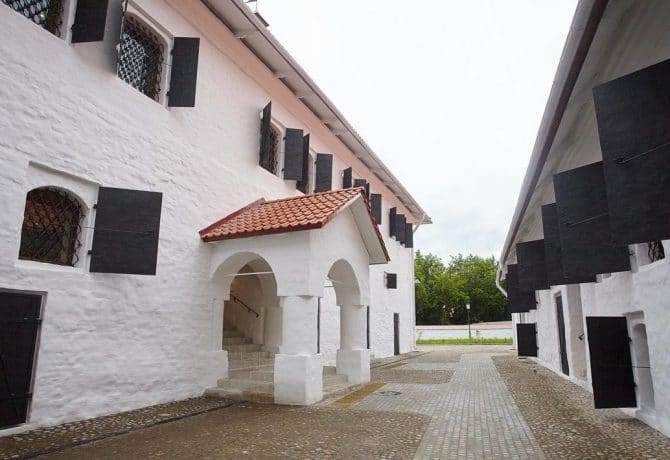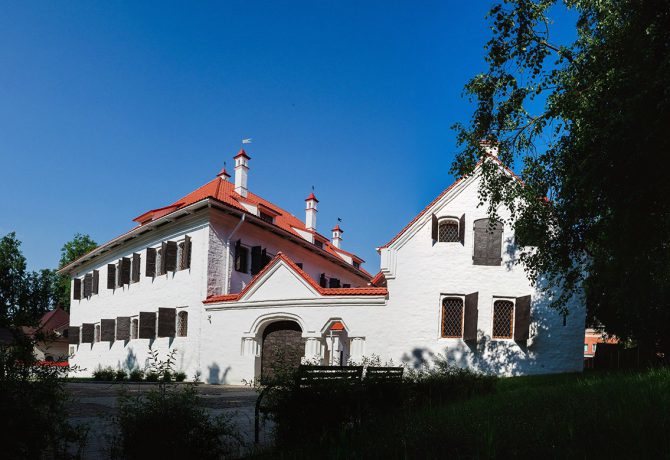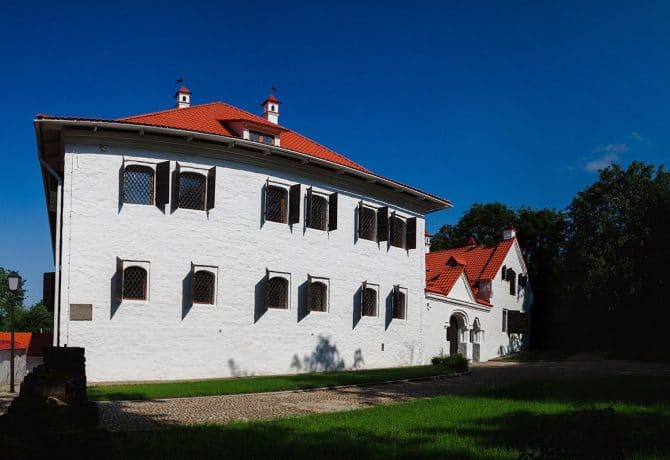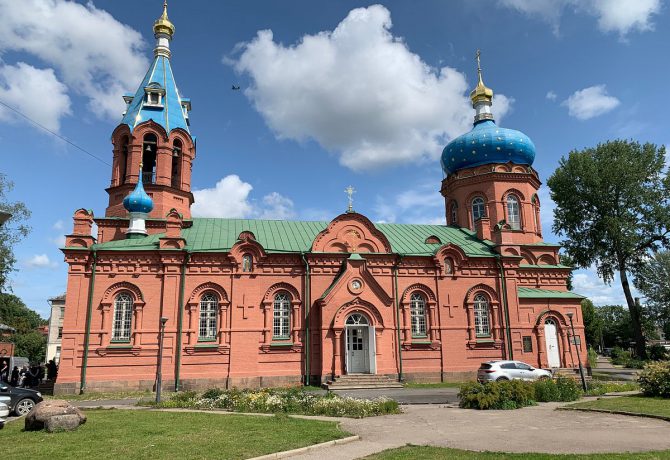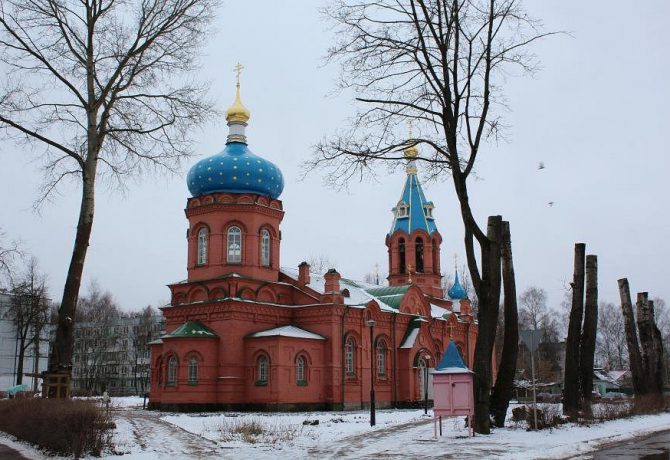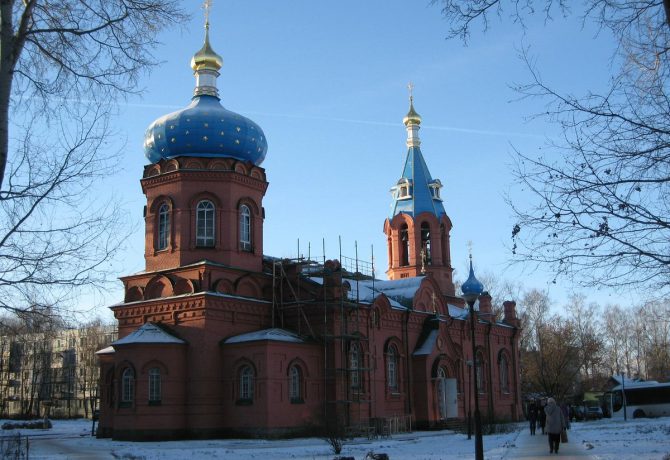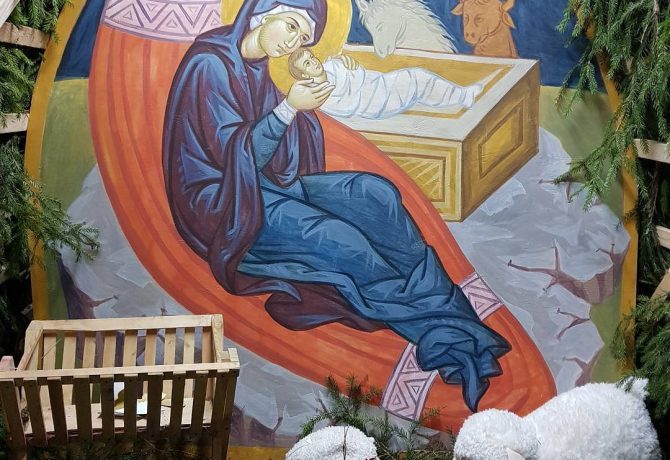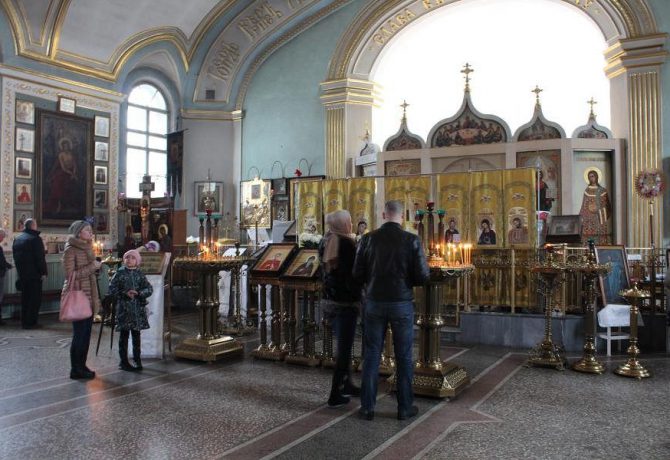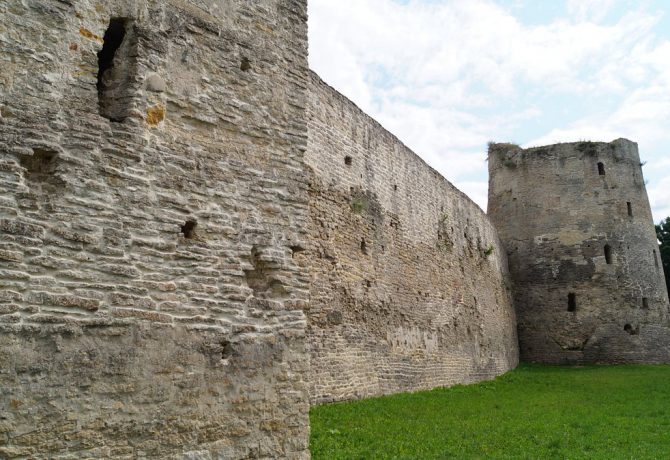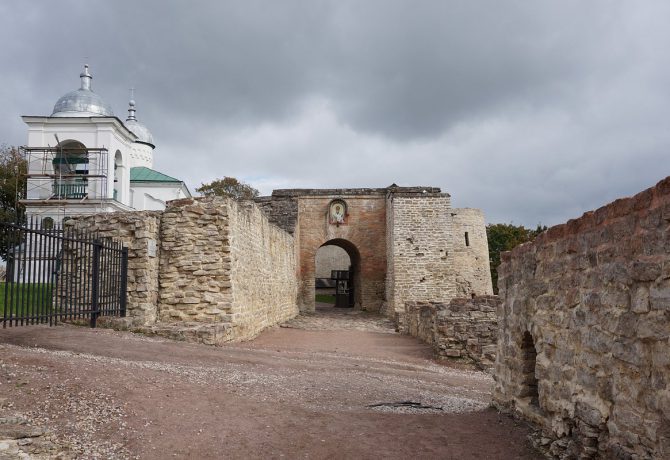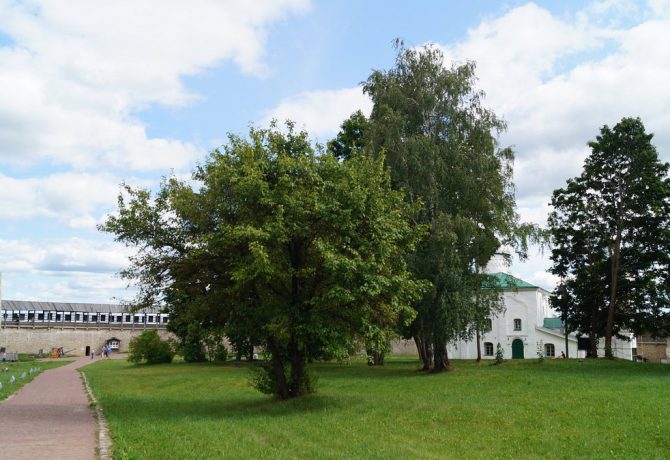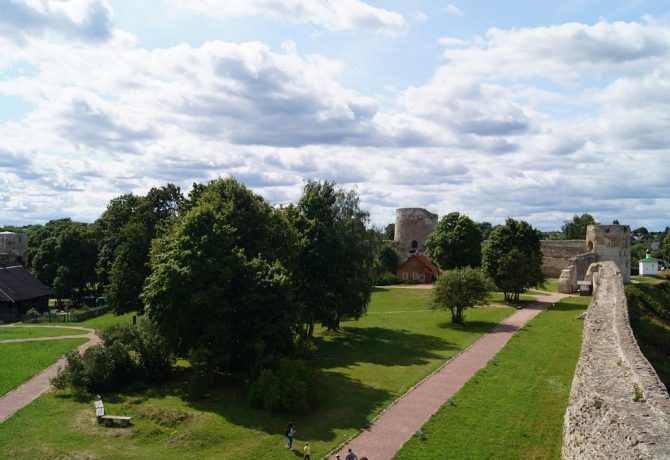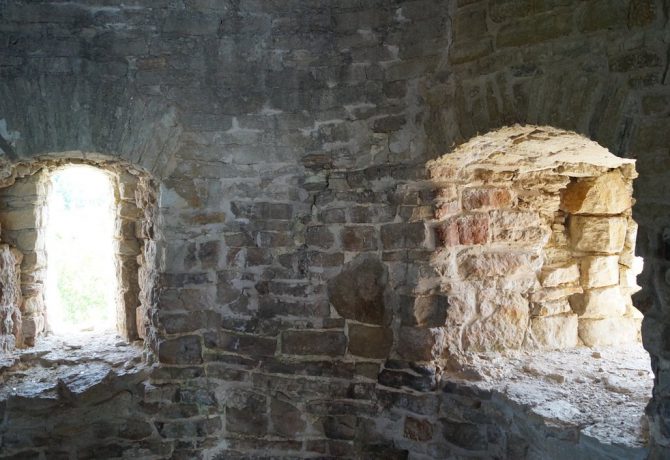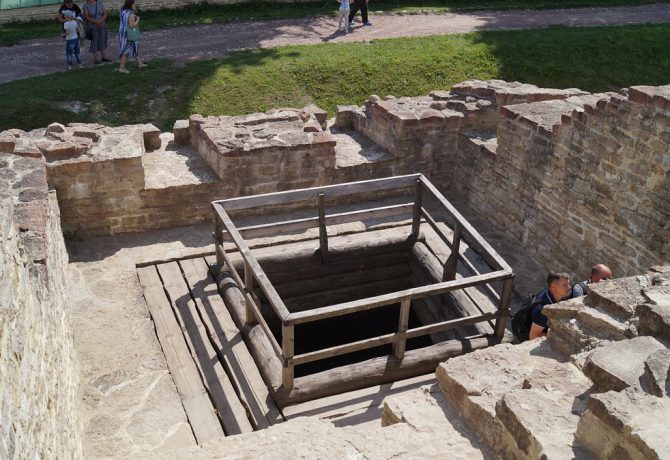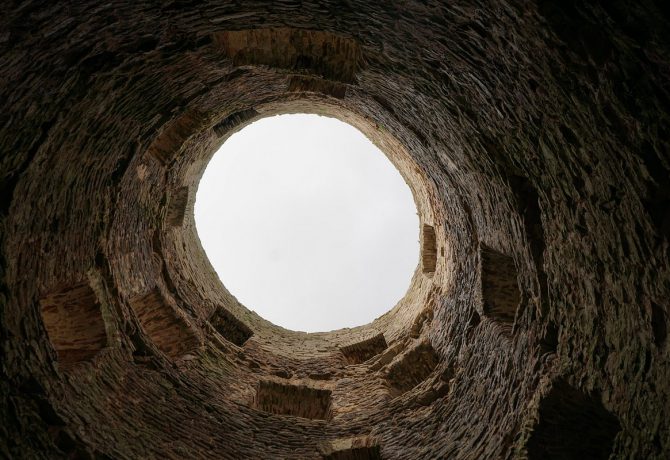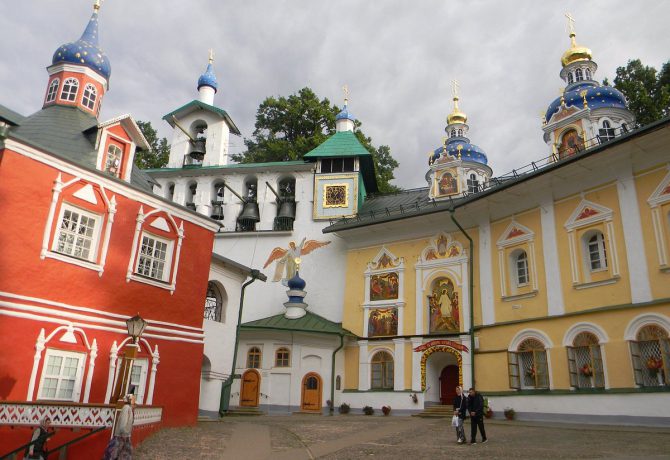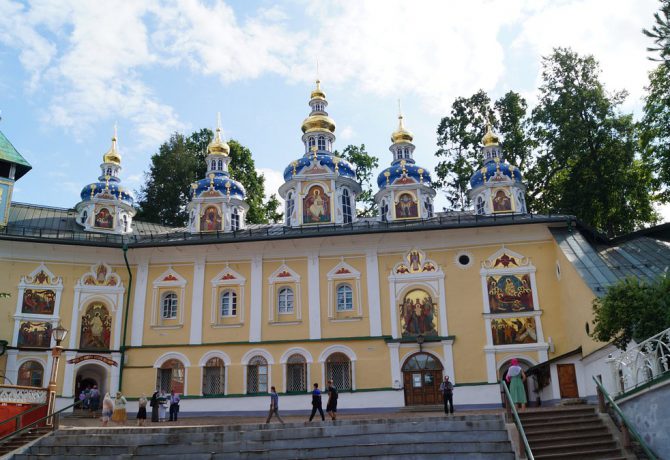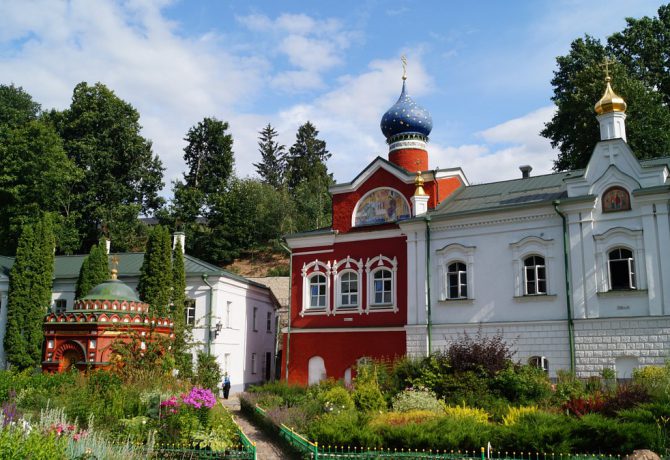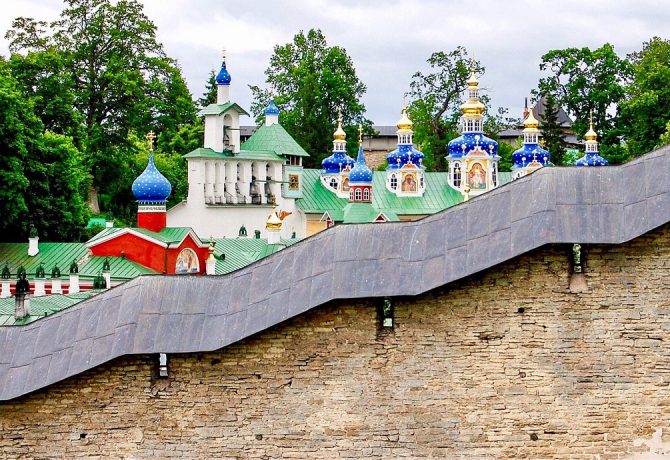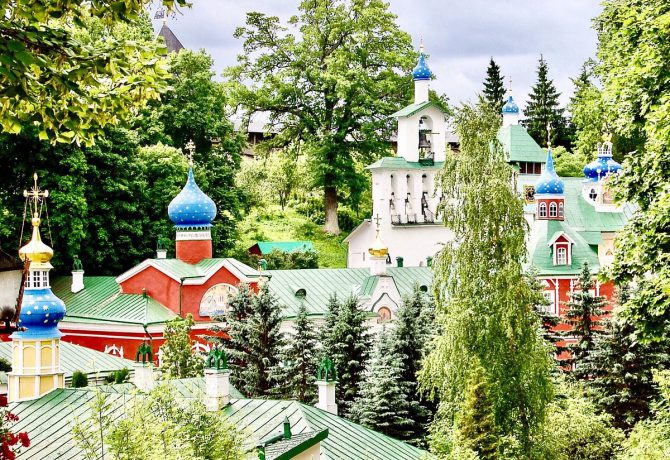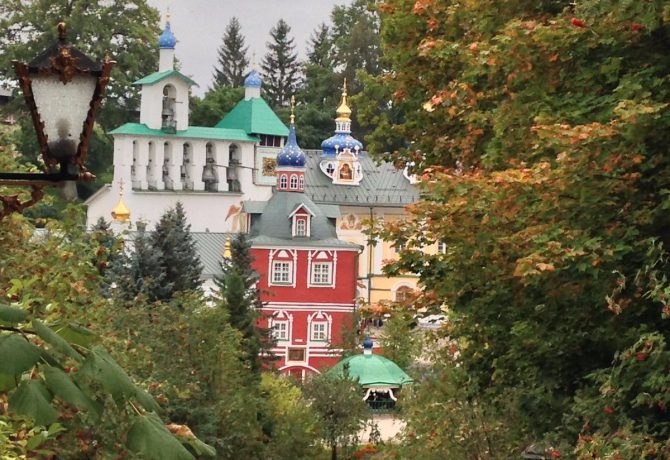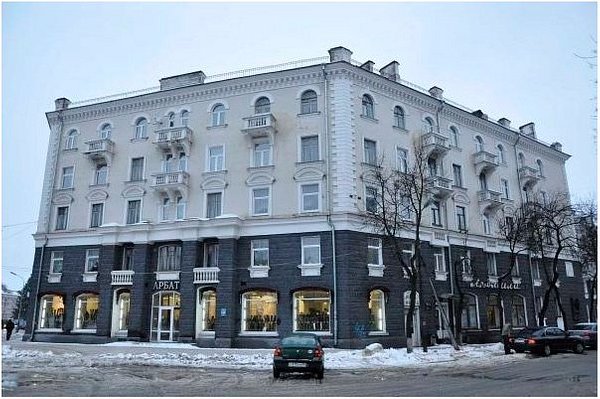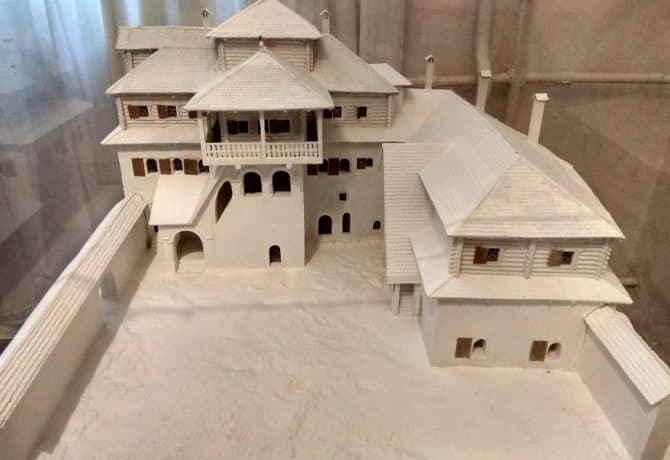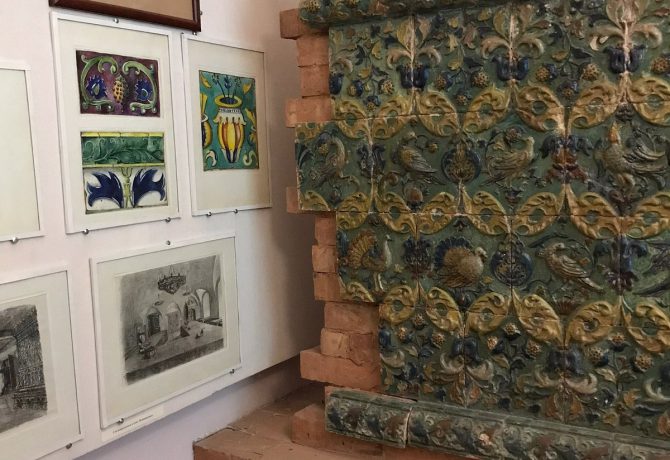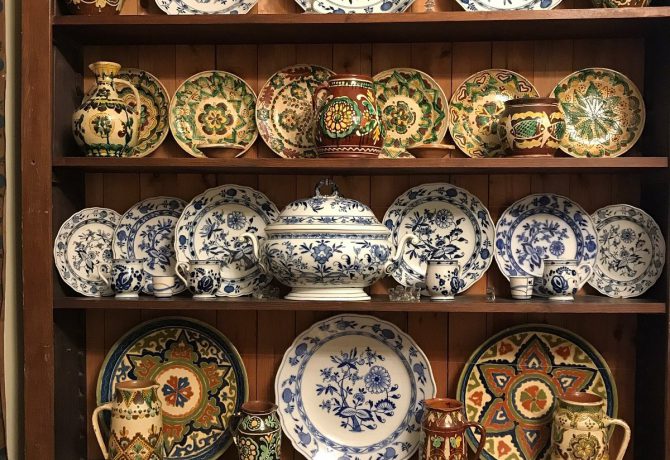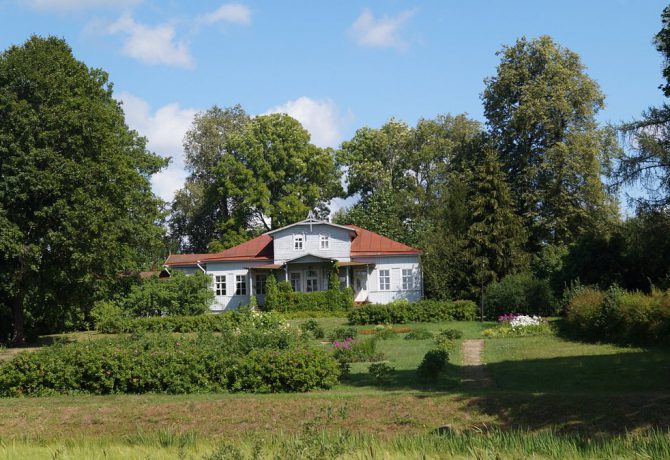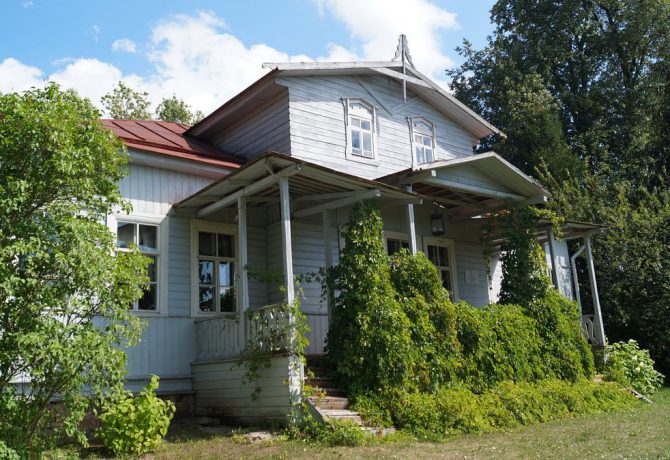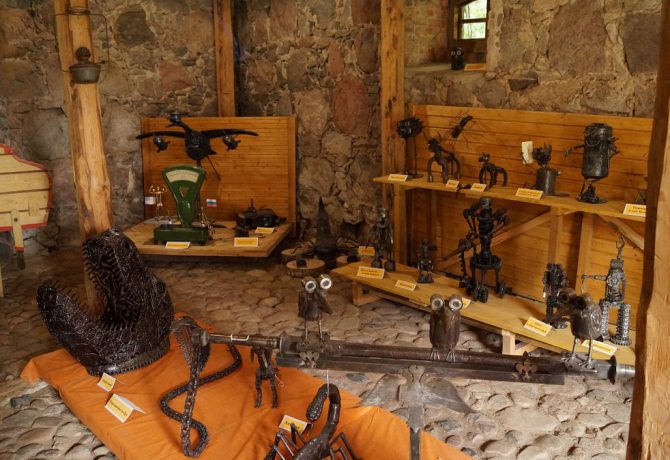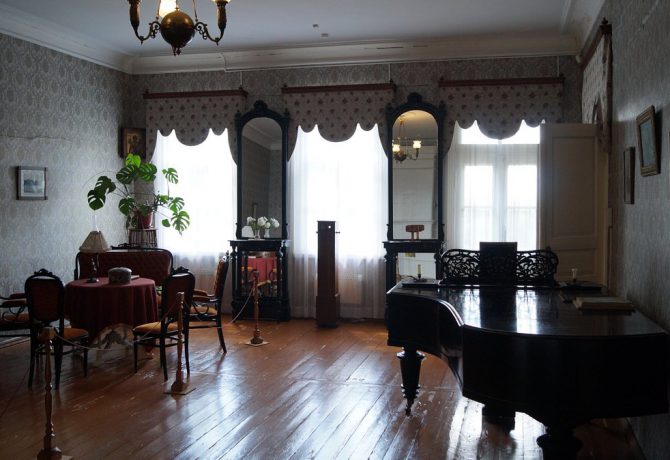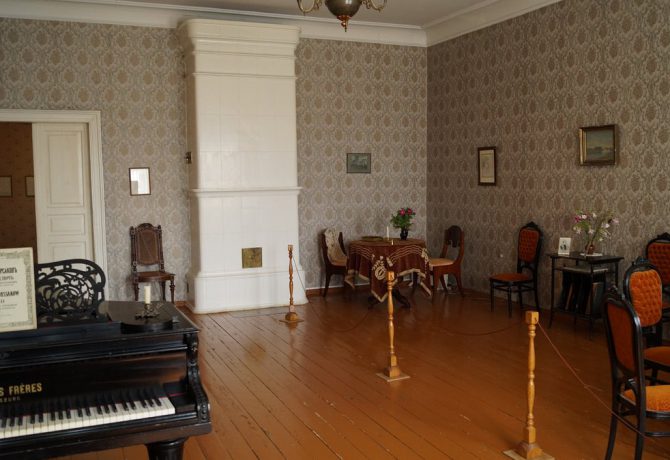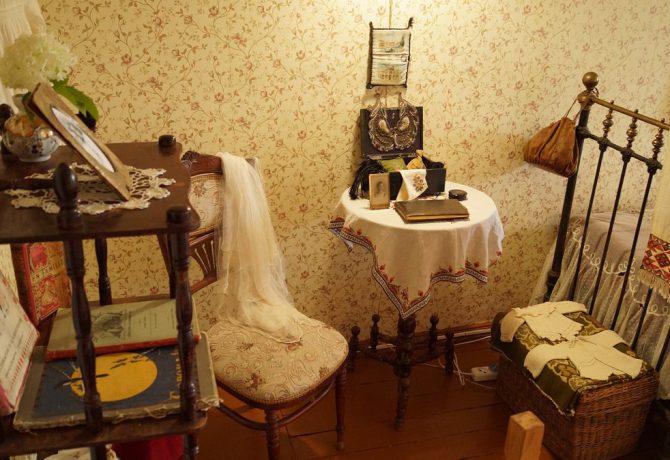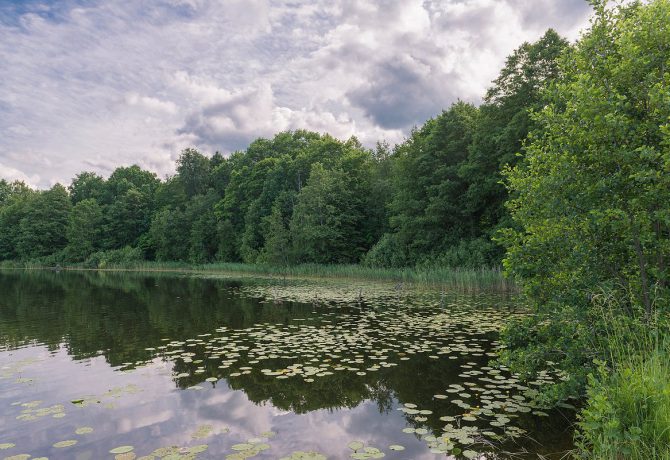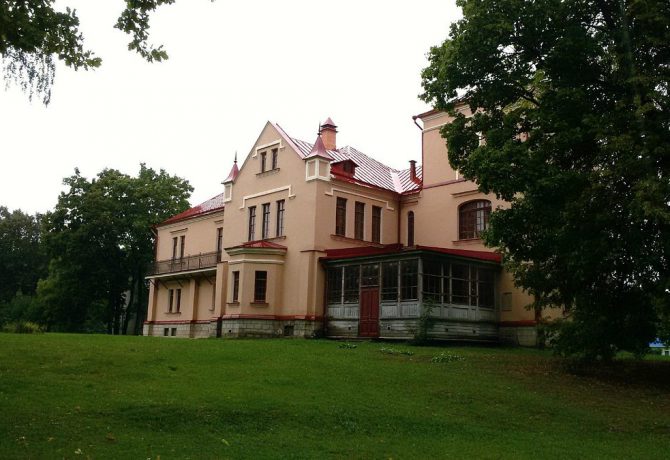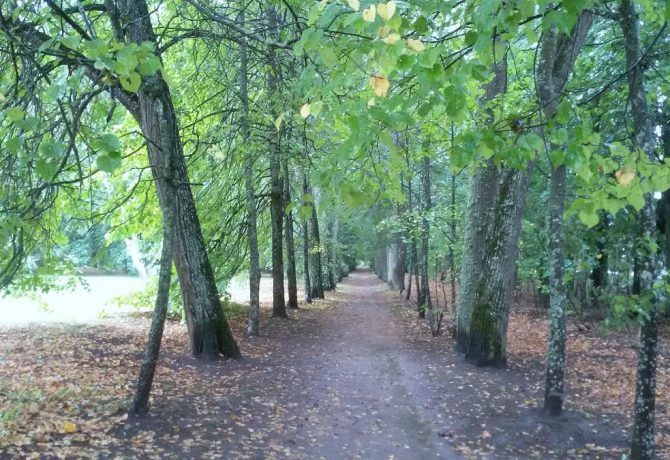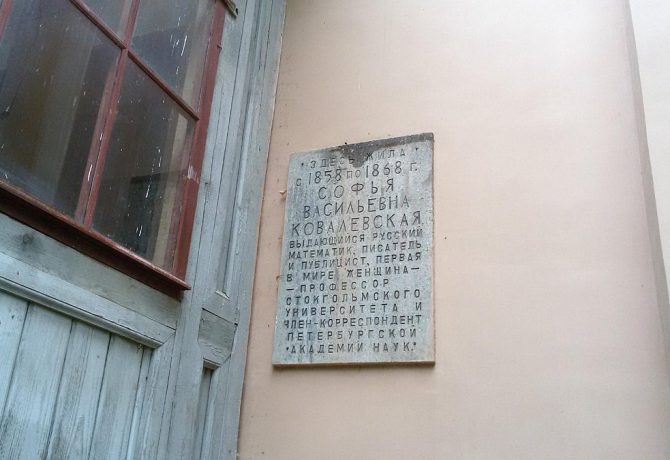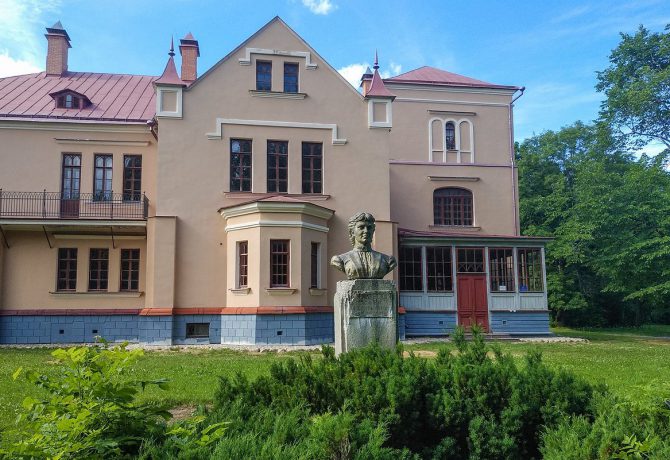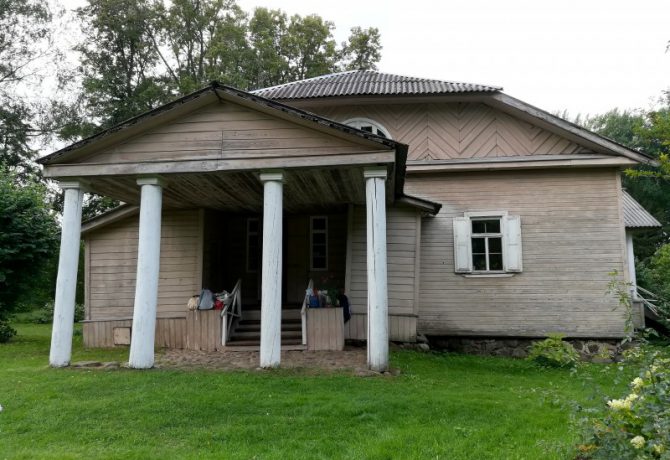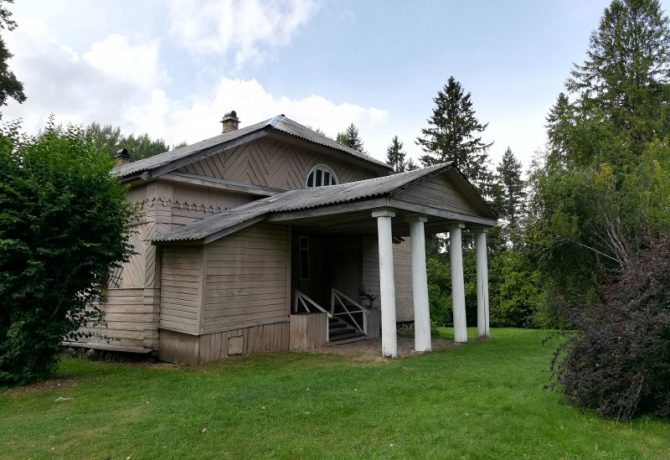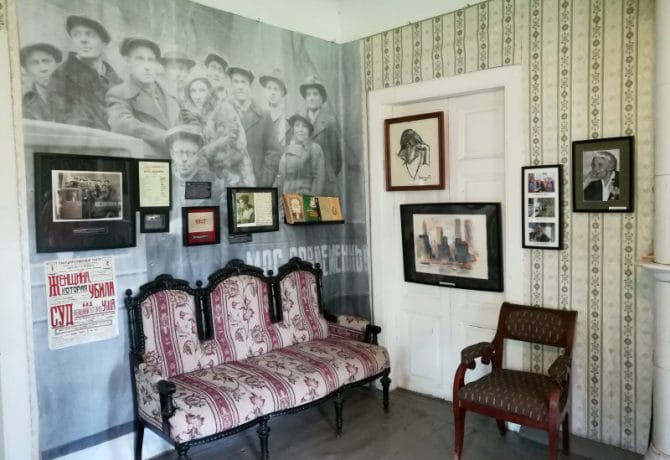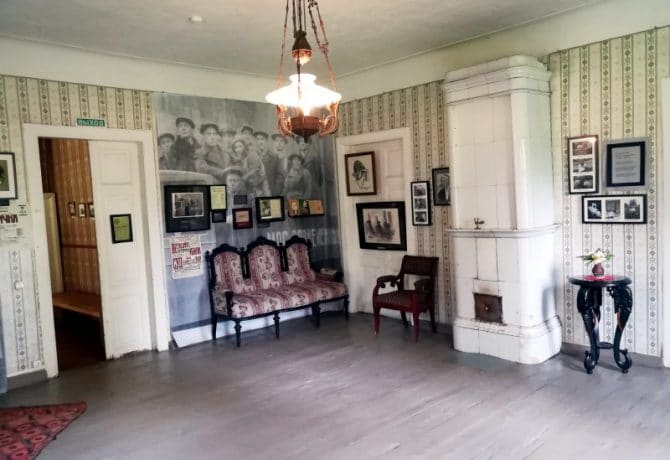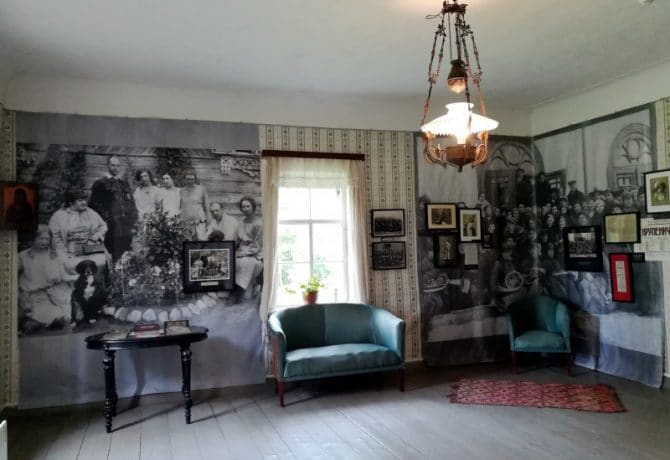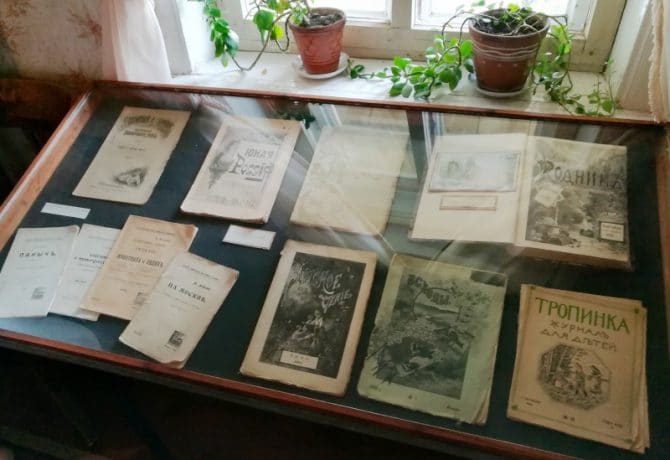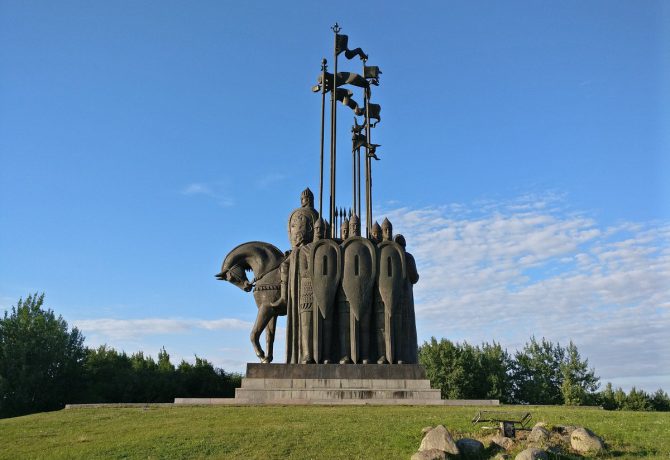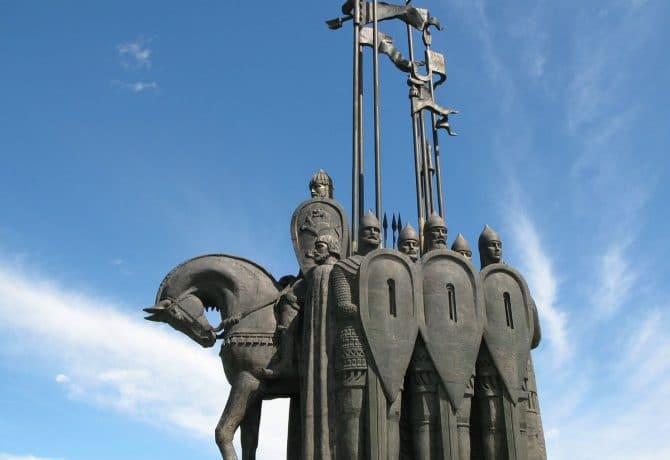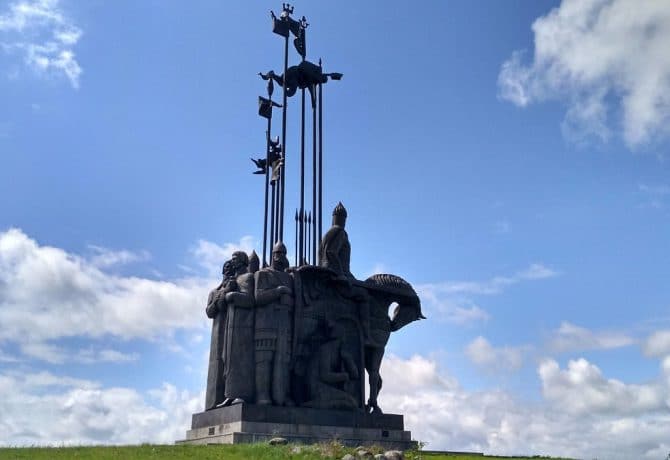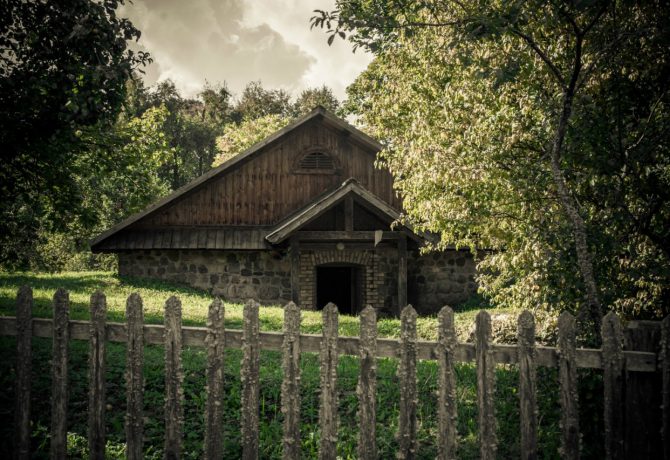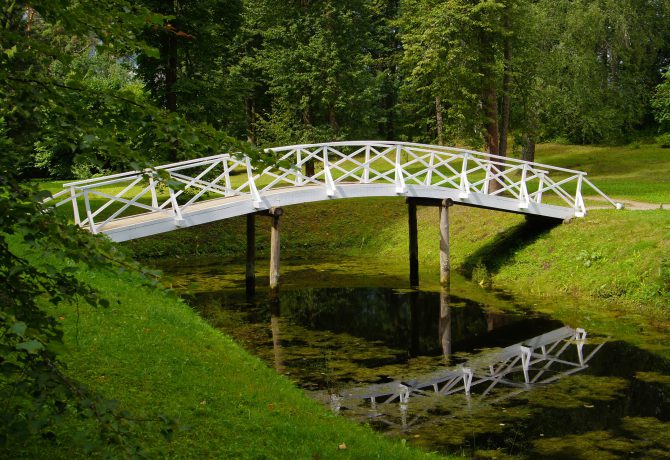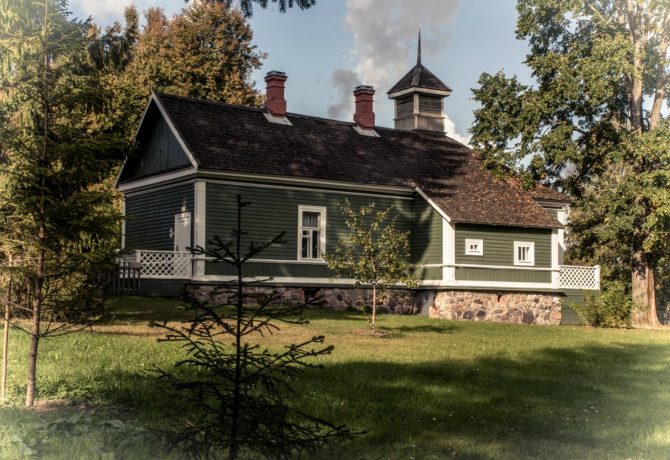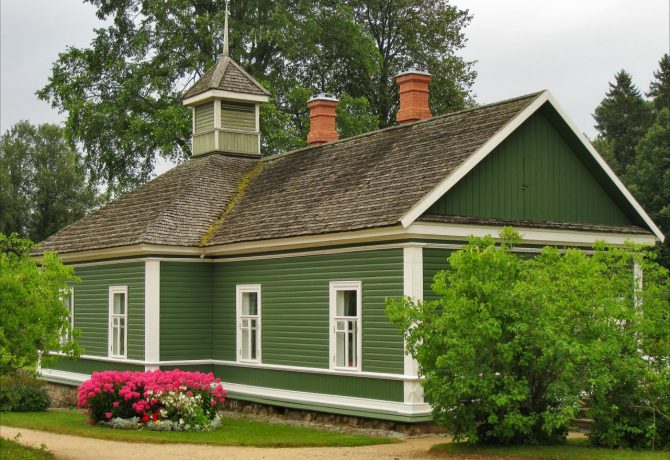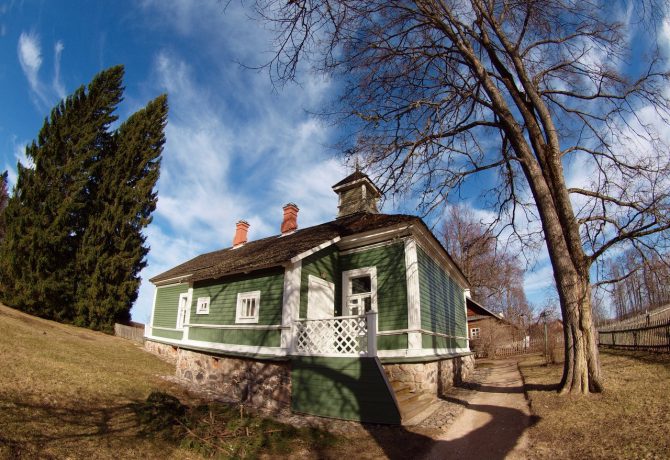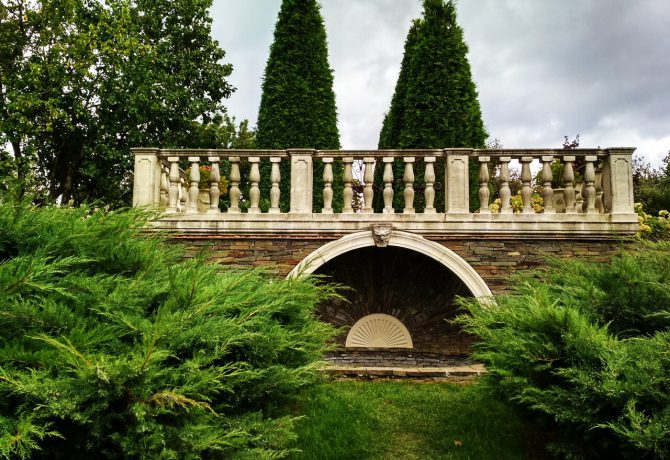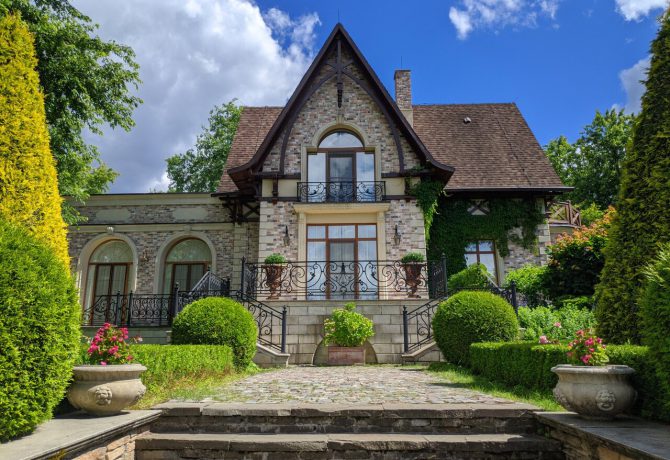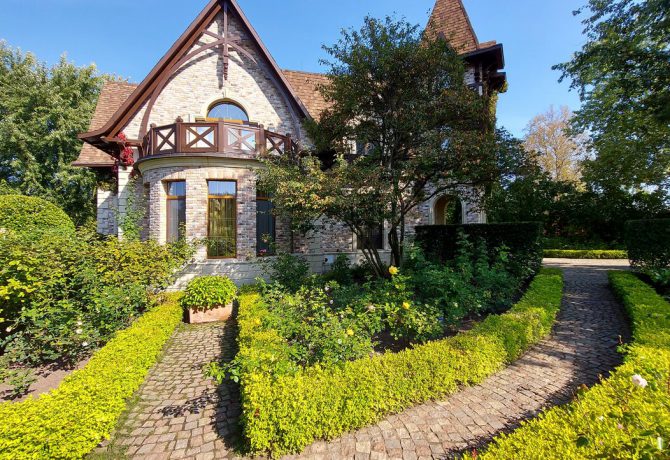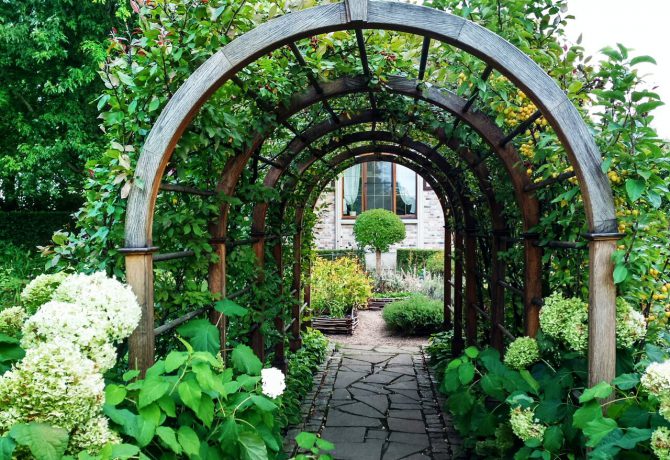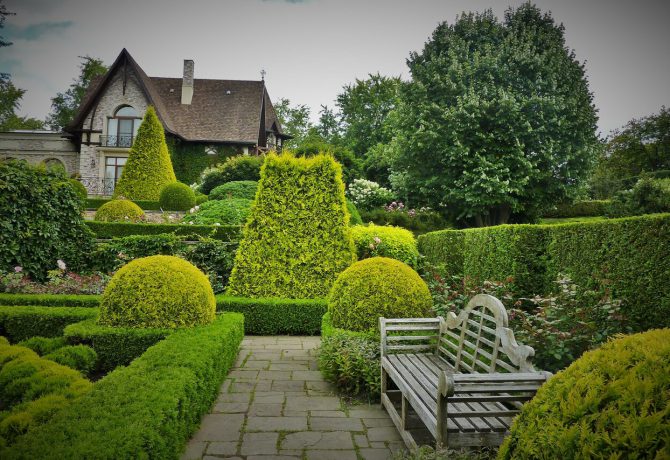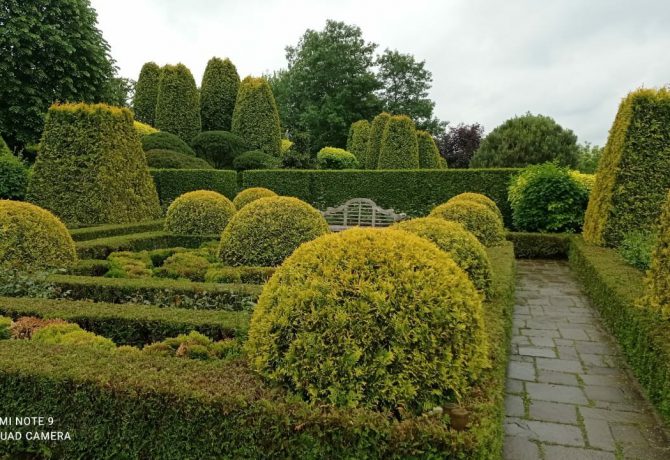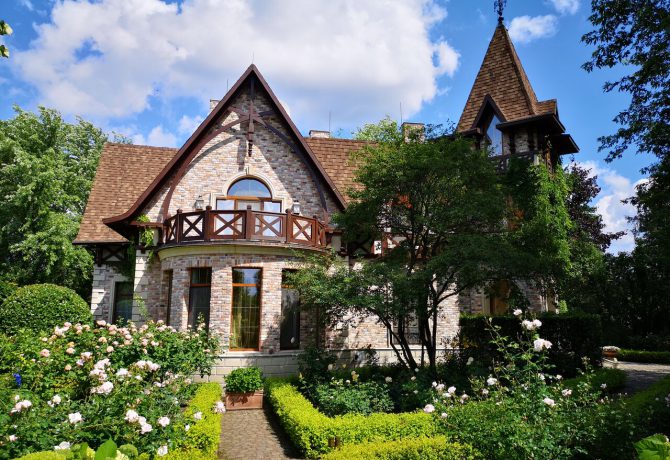Pskov is one of the oldest cities in Russia, first mentioned in the work of the chronicler Nestor in 903. For a long time the city was under the rule of Novgorod, then there was a period of specific autocracy, and in 1510 the Pskov Republic passed under the strong hand of Moscow. In these places have always fought: feuds and struggle for power, raids of Lithuanians and Germans. This circumstance was reflected in the architectural tastes of the townspeople – that is not a house, then a fortress. Everywhere there were powerful fortifications: Krom, Okolnichy city, Izborsk, Pechora. Today, the Pskov region is a land of countless attractions. Dozens of museums, estates, churches, merchant chambers, parks, monuments in Pskov alone can not be bypassed in a day. The city is also known for the fact that it was at the Pskov railway station in the imperial car that Emperor Nicholas II signed the abdication. Today, a chapel was erected on this place in memory of the event that was the beginning of great troubles for the whole country. It is impossible to ignore the numerous tourist places in the region, of which the most significant are the Pskov-Pechersk Monastery and the Pushkin Mountains. About the most important sights of the Pskov region will tell this review.
- 1 Spaso-Preobrazhensky Mirozhsky Monastery
- 2 Mirozh Arboretum
- 3 Olginskaya chapel and observation deck
- 4 Cathedral of the Nativity of John the Baptist of the Ivanovo Monastery
- 5 Pskov Kremlin (Krom)
- 6 Holy Trinity Cathedral
- 7 Dovmontov city
- 8 Church of Varlaam Khutynsky
- 9 Kuopio Park
- 10 Gremyachay Tower
- 11 Pogankins of the Chamber
- 12 Chambers of the Menshikovs
- 13 Snetogorsky Monastery
- 14 Church of the Assumption from Paromenya
- 15 Church of the Intercession and Nativity from Prolom
- 16 Mason’s House
- 17 Postnikov’s court of the XVII century
- 18 Alexander Nevsky Church
- 19 Izborsk Fortress
- 20 Pskov-Pechersk Monastery
- 21 Museum-apartment Yu. P. Spegalsky
- 22 Museum-estate of N. A. Rimsky-Korsakov
- 23 Museum-estate of S. V. Kovalevskaya
- 24 Literary and Memorial Museum Of Al. Altaeva
- 25 Monument “Battle of the Ice”
- 26 Museum Reserve Mikhailovskoye
- 27 Orekhovno Manor
- 28 Attractions Pskov on map
Spaso-Preobrazhensky Mirozhsky Monastery
Today it is a functioning monastery of the 12th century with 70-80% preserved wall paintings, as well as a museum. It is better to visit the ancient shrine in dry weather, having agreed on an excursion. The scientific staff of the museum are connoisseurs and lovers of their work, who will talk about the architectural ensemble of the monastery buildings, the meaning of the biblical plots of wall paintings, about people and the tragic history of this place. The brethren of the monastery are very small, but the service in the Transfiguration Cathedral takes place daily.
Mirozh Arboretum
Next to the monastery there is a park of deciduous trees, in which it is so good to walk, breathing in the fresh air. Around neatly planted trees of different species, including rare: yavor, willow ledebura, wrinkled roses and Tatar maple. Ducks swim in a small pond, birds sing in summer. The park is well landscaped: paved paths are arranged, garbage bins, benches and beautiful lanterns are installed.
Olginskaya chapel and observation deck
Local residents have a belief that at this place Princess Olga saw a sign from the sky, after which she ordered to found the “great and glorious city of Pskov”. Now there is a chapel in her honor and an observation deck, from where a panorama of the Great River and the Kremlin opens. Also, the observation deck is mandatory for visiting the Pskov newlyweds, who, according to local tradition, must hang a lock on the fence, thus fastening the bonds of Hymeneus.
Cathedral of the Nativity of John the Baptist of the Ivanovo Monastery
The World Heritage Site of the 12th century is the only temple of the Novgorod school of architecture in Pskov. Not so long ago, the restoration of helmet-shaped heads and zakomar elements was carried out. The cathedral became one of the first monumental buildings of Pskov, built in stone. The interiors of the temple are decorated with antique icons and a wooden iconostasis, the walls are painted white. It is located away from tourist routes, so there is a quiet and spiritual atmosphere.
Pskov Kremlin (Krom)
The Kremlin complex with fortress walls and a cathedral is the main city landmark. The time of construction of the fortress is attributed to the turn of the 14-15 centuries. Entrance to the territory is free, visits to museums, towers and guided tours are carried out for a fee. Tourists inside the Kremlin meets a spacious, well-groomed and clean area for walking. Climbing the stairs, you can walk along the wooden deck along the fortress walls, examining the landscapes from a height. Having downloaded the audio guide, some guests independently get acquainted with the history of the ancient fortress, others book an excursion at the entrance to Krom. The Ethnographic Museum is located in the Order Chambers and in the building of the bell tower. After the restoration, the Vlyasevskaya Tower was opened, from which beautiful views of the city open through small ends.
Tatiana K writes a review: “Krom is literally imbued with the memory of important historical events. From the tour we learned about how the defense of the fortress was organized, about the importance of zahab, where the name “Kutekroma” came from. We climbed up and looked at the city from the Varlaam Tower, which was recently restored. For guests there is a refectory, a souvenir shop and a shooting range where archery is fired. In the building of the bell tower with interest considered the model of Krom, as it was in the 15th century. The museum liked the exhibits: a tiled stove, a loom and a sword of Prince Dovmont. “
Holy Trinity Cathedral
The first church on this site was built in the 10th century, since then the temple has been repeatedly rebuilt. The current two-tiered cathedral is the fourth building built in the 17th century. The dimensions are really impressive – 42 meters in height. For many centuries it was the tallest building in Pskov. In 1935, the Soviet authorities desecrated the temple, making it a museum of anti-religious propaganda. During the occupation of 1941-1944, the Germans returned the shrine to the faithful, since then services in the cathedral have not stopped. Before the forced flight, the Nazis mined the building of the temple, which suffered from explosions during an attempt to demine. Today the cathedral is beautifully restored, a large number of antique icons, church utensils and relics of saints have been preserved from the shrines. The northern asceticism of the interiors merges here with the brilliance of jewelry made of gold, silver and precious stones, complementing the impression of the view of the monumental seven-tier iconostasis of the 17-19 centuries. It is recommended to visit the cathedral together with a sightseeing tour of the Kremlin.
Dovmontov city
This is the name of the ruins found during excavations in the center of the Pskov Kremlin. Prince Dovmont-Timothy ruled this land throughout the second half of the 13th century. Some buildings began to be gradually restored, others had signs with a description of what was once on this place. On the site of the former Annunciation Cathedral, blown up by barbarians in 1933, a memorial cross was erected. You can listen to the history of the Dovmontov settlement with a tour or audio guide.
Church of Varlaam Khutynsky
One of the most beautiful temples of Pskov is the church of the 16th century, consecrated in honor of Varlaam of Novgorod, the founder of the Khutyn monastery. In the annals it was first mentioned in the middle of the 15th century. Since then, the temple burned, rebuilt and restored. The snow-white church is beautiful and expressive from the outside, and inside is decorated with an ancient iconostasis with icons of the 16-19th century. The drum of the dome is painted with wall paintings, the main shrine is the miraculous icon “Joy with pennies of all who mourn”.
Kuopio Park
Picturesque and well-groomed, Kuopio Park is suitable for walking and cycling. Large trees create shady corners, so in demand in hot weather. Benches are installed throughout the park, and bike paths frame the perimeter. After visiting local attractions, it is nice to walk along the willow alley, feed bread to ducks in the pond, enjoy the neatness of the harsh northern flora and a beautiful view of the other side of the river. In 2014, new sculptures and children’s playgrounds were installed in the park. It received its name in honor of the Finnish twin city.
Gremyachay Tower
The exact date of construction is unknown. Once in the 15th century it was a very formidable defensive structure, including a watchtower, a fortress wall up to five meters thick, as well as a guarded bridge with a water gate across the Pskov River. Fortifications were built under the clerk Misyur Munekhin on Gremyachy Mountain, from where the name of the tower appeared. Now the object is in a dilapidated state, instead of the fortress walls there are ruins. But the view is still epic and colorful – a great place for photo shoots in the style of the Middle Ages.
Pogankins of the Chamber
The museum is located in a building of the 17th century, which was built with his own money by a rich merchant named Pogankin. In recent years, the chambers have been actively restored to update and decorate this popular tourist site. The exposition is not very large, consists of two halls: the Middle Ages and the years of the Second World War. Among the exhibits are icons of ancient writing and beautiful paintings, a silver collection and household items. The pearl of the museum is a real combat sword of Prince Dovmont, which is more than seven hundred years old. The average visit time is 1 hour.
Chambers of the Menshikovs
As well as Pogankin, the chambers of the merchant Menshikov impress with the size and thickness of the walls. This is a real medieval fortress. Small windows are decorated with beautiful platbands in the “Moscow style”, since the merchant Menshikov built the building after Tsar Ivan the Terrible conquered Pskov. Moscow architectural tastes began to quickly penetrate into the ascetic northern environment. Today, in the old chambers there is a shopping center: there are souvenir and flower shops, as well as a museum of one of the factories.
Snetogorsky Monastery
A UNESCO World Heritage Site, which, according to legend, was founded by Prince Dovmont-Timothy. The main shrine is the Cathedral of the Nativity of the Blessed Virgin Mary of the 13th century with ancient wall paintings, which are partially restored. The main active temple is St. Nicholas, built in the 16th century. The monastery is small, but very cozy and beautiful, which is achieved, first of all, thanks to the tireless work of benevolent sisters-nuns. Antique icons are preserved in the temple, the women’s choir decorates the church service with a pleasant tune and harmonious consonance. There is a shop-café, where you can buy kvass and goat cheese of your own preparation, drink coffee and have a snack. Going down the path, you find yourself on the banks of the Great River at the foot of the Removed Mountain, on which the monastery buildings are built. In other words, this is a very beautiful place with unique temples, a spiritual atmosphere and a rich history, which must be learned by visiting the Snetogorsky Monastery with an excursion.
Church of the Assumption from Paromenya
The ancient temple was built in the middle of the 15th century on the place where there was a ferry crossing over the Great River. Now the crossing instead of the ferry is the Olginsky Bridge, on the other bank of which the Kremlin is located. The snow-white building of the church has a large size and a colorful belfry of the 16th century, on which they call from the ground with the help of ropes-rockers, which is typical for Pskov architecture. This is the largest five-span belfry of the kind that have survived to this day. From the inside, the church has a modest decoration and a beautiful iconostasis.
Church of the Intercession and Nativity from Prolom
It is located in the southern corner of the Pokrovskaya Tower in Okolny Gorod. It is an ensemble of two mirror churches, between which a small bell tower is arranged. It got its name during the Livonian War, when in the days of a heavy siege, part of the fortress wall suddenly collapsed, as a result of which a breach was formed. Pskov only miraculously were able to repel the attack and prevent the troops of Stefan Batory from entering the fortress. In gratitude for the miracle, the inhabitants of Pskov attached a mirror analogue to the Church of the Intercession located near the fortress walls. According to many tourists, inside there is a cozy and warm atmosphere. The church is hidden from tourist routes, so there is no influx of people.
Mason’s House
The exposition of the Pskov Museum is presented in a beautiful mansion in the Art Nouveau style, once owned by the Scotsman Ludwig Mason. In the gold pantry are exhibited precious jewelry made of gold, silver and stones. Also of great interest is the collection of coins, treasures, collectible weapons and other artifacts. A considerable part of the exhibition is occupied by masterpieces of ceramics and porcelain. It is not so easy to get inside, as general excursions are extremely rare. It is recommended to call the numbers on the site and make an agreement.
Postnikov’s court of the XVII century
Colorful chambers were built in the late 17th century by rich merchants Postnikov. After the sale of buildings, a garrison of soldiers lived here for a long time, and in Soviet times a library was arranged. As a result, the ancient complex of buildings came to complete desolation, but recently a large-scale restoration was carried out. Now the chambers are used as a museum site, where you can see an interesting exhibition of archaeological finds and antiquities. Also in the funds are priceless icons and paintings, weapons and porcelain, coins and household items, including. rich collection of samovars.
Alexander Nevsky Church
The temple was built of red brick as a regimental for the Omsk infantry regiment, so it was consecrated in honor of the victorious commander, the pious Prince Alexander Nevsky. The Soviet authorities set up a warehouse and a club in the holy place, but for a short time the music was played and danced by party functionaries. Soviet power fell and the temple was restored by the efforts of parishioners. Now paratroopers from the Pskov Airborne Division often visit here, instead of Omsk soldiers of past times. Inside the believers meets a large number of icons. The space of the temple has a large volume and spacious space due to the fact that there are no columns. Next to the church there is a monument to the deceased 6th company of Pskov paratroopers.
Izborsk Fortress
This is a real fighting fortress of the 14th century built, which withstood more than one siege. Around everything is watered with the blood of thousands of fallen soldiers. The towers and fortress walls are well preserved, gravel paths are arranged inside. You can climb the fortress walls and the observation deck, from where a magnificent view opens. There is also access inside the towers and to the secret manhole, which leads to the lake with ducks and swans. The height of the walls ranges from 7-10 meters, the thickness of 4 meters. Five powerful towers, each of which has its own history. A formidable citadel on the top of a hill is piled up, so in the Middle Ages it was never able to take an attack. A visit to the fortress is made by tickets, here at the box office you can pay for a tour or download an audio guide. After inspecting the fortifications, tourists usually go down to the Slovenian keys and the spring, where you can collect water and take a selfie against the background of the Izborsk fortress.
Pskov-Pechersk Monastery
This is one of the most beautiful and holy places in Russia. The monastery has more than 500 years of history, and was not closed even in the Soviet period. The temple complex is located on the Holy Mountain, surrounded by a fortress wall with many towers. In the Middle Ages, the Pechora fortress was repeatedly besieged, bloody battles were fought here. The Assumption Church of the 15th century is arranged in a cave and is a real masterpiece of ancient architecture. The majestic St. Michael’s Cathedral was erected in honor of the victory over the troops of Napoleon. Also interesting: the bell tower of the 15th century with a set of ancient bells and street clocks of the 16th century, and in the beautiful building of the sacristy collected treasures and artifacts of the past. An unusual attraction is the caves under the Holy Mountain with numerous passages, in which more than 10 thousand people are buried. Caves are known primarily for ancient ceramic tombstones and graves of holy elders. The main monastic shrines are a large number of antique icons, including two miraculous ones: “Dormition of the Mother of God with a Life” of the 15th century and “Tenderness of Pskov-Pechersk”. Believers also widely revere the icon of St. Nicholas the Wonderworker of the 16th century and the St. Nicholas Gate Church, built at the same time. In addition, the beautiful architecture and decoration of churches, the relics of holy saints, the solemnity of church services performed by the monastic brethren – this and much more annually attracts tens of thousands of believers from different parts of the country to worship. Around the Pskov-Pechersk Monastery the business environment is in full swing: refectories, cafes, souvenir shops, hotels work. The popularity of this place creates a large number of jobs for Pechora residents, for example, the monastery contains a whole pilgrimage city consisting of two-story buildings. To get on a tour of the temples and caves, you need to pre-register with the duty officer and come at the appointed time.
Svetlana K writes a review: “The monastery makes a fabulous impression. Multi-level territory, squirrels galloping through trees, a temple carved into the mountain, bright architecture, catacombs – all this is impressive. We ordered a sightseeing tour, collected water in the Holy Spring, had lunch in the monastery refectory, where the sane price tag is delicious. We walked around the fortress, which looks very beautiful from the outside. The history of this place, of course, is striking and tragic, but only truly believing people can appreciate the ancient shrine. “
Museum-apartment Yu. P. Spegalsky
Yuri Pavlovich Spegalsky is an outstanding restorer, architect and artist of the 20th century. Thanks to his works, many cultural and historical objects have been preserved and restored in Pskov. The museum-apartment where this talented man lived appeared by the cares of his wife, who carefully collected things made by the hands of her husband. Of particular interest are the details of life during the difficult period of occupation of the city, when it was necessary to save not only cultural and historical values, but also their lives.
Museum-estate of N. A. Rimsky-Korsakov
The memorial complex of the great composer was restored according to documents, since the Nazis who retreated with battles burned the museum to the bottom. It consists of two estates – Lyubensk and Vechash. The tour takes place to the music of the author, experienced guides will tell about the life and life of the great maestro, show personal belongings. The beauty of nature and the atmospherics of these places, of course, fascinate. For a full visit, you need to spend at least half a day.
Museum-estate of S. V. Kovalevskaya
Sofia Kovalevskaya is the first female mathematician in Russia to earn international recognition as an academician and winner of prestigious prizes. The museum of her memory is located in Polibino, where in a beautiful mansion personal belongings, furniture and household items of that time are collected. By ordering an excursion, you can fully appreciate the interesting biography and details from the life of an outstanding professor of mathematics. In addition, the estate is located in a beautiful park with a lake, ancient oak and linden alleys, where it is so pleasant to walk and enjoy the wonderful landscape.
Literary and Memorial Museum Of Al. Altaeva
Russian writer M.V. Yamshchikova, whose work fell on the first half of the 20th century, hid her identity under the pseudonym Al. Altaeva. The old woman lived in the old wooden estate of the Log of the Plyussky district, where today a museum of her creative and original heritage is arranged. In addition, the main museum house was built at the turn of the 18th and 19th centuries – this is the oldest wooden house in the Pskov region, which has survived to this day. The exhibition presents personal belongings, photographs, letters, books and other items.
Monument “Battle of the Ice”
Near the city there is a monument of gigantic size, on which Prince Alexander Nevsky and his squad are carved from bronze, going towards Lake Peipus. The height of the monument is 30 m. The sculptural composition symbolizes the unity of the Russian people in front of a terrible danger. The monument is located 2 km from the Snetogorsky Monastery.
Museum Reserve Mikhailovskoye
The carefully recreated Mikhailovskoye estate breathes and lives exclusively in memory of the great talent and heritage of A.S. Pushkin. This is the ancestral nest of the Hannibals-Pushkins. The original buildings died at the hands of the Nazis, but some of the writer’s belongings, nannies and family members managed to hide. Today they are included in the colorful exposition. In addition to Mikhailovsky, visitors have access to other estates, which are usually walked. These are Trigorskoye and Petrovskoye – classic estates of that era. Authentic houses with well-groomed courtyards, shady alleys and parks – everything is cleaned and stylized so that tourists can feel the spirit of the time forever gone from us pre-revolutionary Russia. After inspecting the estates, you can look at the grave of A.S. Pushkin, which is located behind the altar of the Assumption Cathedral of the Svyatogorsk Monastery, which is located in the village of Pushkin Mountains. During the retreat, the Nazis mined the grave, knowing what the memory of genius meant to Russia. More than 10 servicemen were killed in mine clearance. To visit the estates and monastery you need to spend at least one day.
Sergey G writes a review: “Perhaps we were just lucky with the guide, but Mikhailovskoye left the most positive impressions. We learned a lot of new information about Pushkin, listened like a fairy tale, with bated breath. The estate has preserved an indescribable atmosphere of antiquity. I was also impressed by the nature of these places: silvery moss grows on the trees, herbs and a bright blue sky around… Colorful places! It is better to visit the museum-reserve as part of organized groups, so it will be cheaper and you can learn a lot of new things. “
Orekhovno Manor
The village of Orekhovno is located near Pustoshka. Wealthy landscape designer A. Grivko built here a beautiful estate with a park in the style of European castle culture. Once here, you do not understand where you are: in Provence or in the Pskov region. The park is richly decorated with floral arrangements and antique sculptures, rose gardens and oleanders. There is a small pond, a fountain and a mini waterfall. The price tag for visiting this newfangled eco-tourism facility is also quite European. At the entrance they sell ice cream and snacks, the estate works only from May to October from 10 to 19.
It is good to come to Pskov in summer, but also in winter, at Christmas or Epiphany, there is some kind of fabulous, festive atmosphere of an ancient Russian city, so unlike the new industrial and densely populated quarters. In 2019, 10 churches were included in the UNESCO list of cultural heritage as representatives of the Pskov architectural school. In recent years, the city has blossomed and transformed, thanks to the efforts of the authorities and patrons, who have put a lot of effort into the domestication of the environment, allocated funds for the restoration and improvement of the historical center.

